The Official IC Fashion Forum Suits Thread
Options

Maximus Rex
Members Posts: 6,354 ✭✭✭✭✭
blakfyahking wrote: »YoungGoldie wrote: »Goat thread. You should post more ? like this in the sub forum if you havent already.
cosign....t/s should do a thread about buying/wearing a suit next
Since there seems to be an interest and y'all seem to be respective to it, I'm going to be posting Youtube videos and articles from two places that I found to be extremely helpful in helping me lay the foundation of my "grown man," wardrobe.
These sites are Antonio Centeno's http://www.realmenrealstyle.com/videos/ and from the www.artofmanliness.com. If this ? is going to take a minute, so if you have a question that hasn't been addressed in one of the videos or articles, then I suggest that you go to one of the fore mentioned sites, (or another resource,) and do a search. Also, don't forget to share that information on this thread. Finally this thread started by FucktheIC Weekly Business Fashion Must-Haves http://community.allhiphop.com/discussion/478023/weekly-business-fashion-must-haves/p1 has a lot of good info too.
How to Build Your Wardrobe: Part I
http://www.artofmanliness.com/2010/04/16/how-to-build-a-manly-wardrobe-1/

Our appearance speaks louder than our words…
Every day we pass by hundreds of people on the subway, in hallways, or on the streets, never saying a word. Yet despite the lack of verbal communication, decisions are being made as to the trustworthiness and intentions of those around you. Doubt this? Try wearing a ski mask and trench coat while gesturing wildly with your arms. In the 15 minutes you have before the police show-up, take note that despite not saying a single word your appearance has sent a message.
Yes, what I just said is unfair. Right now you may be thinking “Judge me not by my clothing, but by the integrity in which I live my life” – and I couldn’t agree more. But life isn’t fair, human beings have and will continue to judge others based on the information presented to them – and in most situations this is at first our physical appearance. Dress like a thug and people treat you like one; dress like a professional and you’ll have doors opened for you.
A Man’s Wardrobe
There are many things that we can’t control; the weather, the economy, the fact that college football needs a playoff system. How we present ourselves to strangers and new acquaintances, however, is not one of them. When you shake hands with a potential partner, they form an instant impression of you which is not easily dislodged. First impressions are powerful because until we begin to speak, they are the only bits of information we have to make a snap decision as to whether we like or trust someone. Countless communication studies have shown a man’s visual appearance is initially more powerful than what he says; ignore your wardrobe at your own risk.

There will be three articles in this series –
Part 1 – How to Build Your Wardrobe – Making the Commitment & Understanding Your Needs – Before a man begins anything that will require substantial time and resources, he has to be committed to the change. In this article we break men up into defined groups based on their lifestyles and we then address their specific needs. The goal is to give you a quick checklist of items you should consider investing in depending on your career choice and personal requirements.
Part 2 – How to Build Your Wardrobe – Clothing Specifics – In this article we address specific menswear questions such as the order in which you should assemble your clothing, which suit colors and style should you choose if you only own one suit, which shoe styles you will get the most wear out of, and how you mix casual wear into the wardrobe. We’ll also talk about where those on a very limited budget should invest the bulk of their money if they are starting from scratch.
Part 3 – How to Build Your Wardrobe – Accessories, Maintenance, & Storage – In this final article we’ll cover the often neglected points of a man’s wardrobe such as how to incorporate hats, watches, & other accessories along with clothing storage & protection.
Part 1 – How to Build Your Wardrobe – Making the Commitment & Understanding Your Needs
1st – Learn and then Commit to Improve Your Personal Presentation
First, before spending a dime, you must commit to making the change. Do this by going through your current clothing and setting aside everything that you 1) have not worn for two years 2) is noticeably stained and 3) fits so poorly not even a master tailor could adjust it to fit. Package it all up and mark it for the Salvation Army or EBay. Now over the next week verbally inform a few close friends and family member as to what you are doing – perhaps even promise a new profile picture on Facebook of you decked out in your new clothing. The goal here is to create a network of supporters and audience; this puts pressure on you to fulfill your promise.
And do not forget to gain the support of your spouse or the person who will be helping you to pay for all this. I find my clients’ wives are ecstatic and fully supportive of their husband’s efforts to dress better. If you keep your partner out of the decision, however, you could be met with unexpected resistance.
2nd – Understand the Basics of Style and Your Specific Needs
You have to understand why you need professional clothing in your wardrobe. I’ve written about this point quite a bit; if you need further convincing check out past Art of Manliness articles such as Your Personal Appearance: The Importance of Being a Sharp Dressed Man or explore the writings of former FBI counter intelligence agent Joe Navarro – he blogs extensively about the importance of proper presentation and the power of your curbside appeal.

Next, build a foundation in understanding the rules of dressing well. I can’t stress the importance of a man taking control of his own image. Handing the responsibility over to your wife or girlfriend, however well meaning they may be, is a dangerous option; you may end up looking like a Ken doll. These resources will give you the basics –
AOM Classic Articles such as A Man’s Style in Relation to His Body Type & Three Steps to Building Your Individual Style
The Art of Manliness’s Style Community
A Tailored Suit’s Men’s Style Guide
And make sure to supplement these guides with modern style blogs such as Street Etiquette, Put This On, Image Granted, and Young Man/Old Man.
Comments
-
Types of Men and Their Clothing Needs
The Constant Professional’s Wardrobe
You wear a suit Monday through Friday, often find you are having dinner with clients, and even on the weekends dress well as you might run into colleagues and clients out on the town. Your image is tied closely to the reputation you have carefully crafted over the years – a man who pays attention to the details and can be trusted to handle others people’s affairs with professionalism.
You wear a suit Monday through Friday, often find you are having dinner with clients, and even on the weekends dress well as you might run into colleagues and clients out on the town. Your image is tied closely to the reputation you have carefully crafted over the years – a man who pays attention to the details and can be trusted to handle others people’s affairs with professionalism.
Items that should be in the Constant Professional’s wardrobe:
6+ Suits
3+ Pair Dress Shoes
2 Pair Casual Leather Shoes
Belts that match above shoes
15+ Dress Shirts
15+ Ties
1 Pair jeans that fit – no holes
4 Pair Slacks, Dark & Light
4+ Button-up collared sport shirts
2+ Solid Polo Shirts
5+ Sweaters
10+ Undershirts V-neck
2+ Sports Jackets
1 Navy Blazer
10+ Pocket Squares
2 Simple Dress Watches
1 Overcoat
1 Pair Leather Gloves
1 Trenchcoat
1 Hat
Presentable Athletic Clothing
Collar Stays, Cuff Links
Items that would be helpful for the Constant Professional to have:
Full black tie ensemble – A onetime investment enables you to have a perfect fitting and better quality tuxedo that has paid for itself after 5 wearings.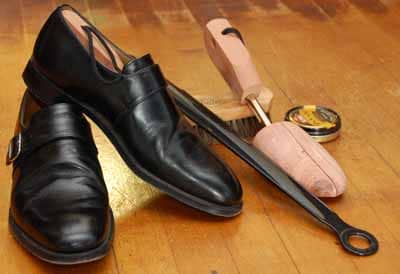
The Monk Strap Dress Shoe – A Traveler’s Friend
The Business Owner’s Wardrobe
You occasionally wear a suit when meeting with clients or investors but in the confines of your office you are more casual while still maintaining a level of professionalism around your employees. In the evenings with friends and family you are much more relaxed, and even if you head to the office Saturday morning, you’re going in jeans and a polo.
Items that should be in the Business Owner’s wardrobe:
1+ Suits
1+ Pair Dress Shoes
2 Pair Casual Leather Shoes
Belts that match above shoes
10+ Dress Shirts
3+ Ties
2 Pairs of well-fitting Jeans
5 Pair Slacks, Dark & Light
5+ Button-up collared sport shirts
5 Solid Polo Shirts
5 Sweaters
10+ Undershirts V-neck
2+ Sports Jackets
1 Simple Dress Watch
Items that would be helpful to have:
1 Navy Blazer
5+ Pocket Squares
1 Overcoat
1 Pair Leather Gloves
1 Trenchcoat
1 Hat
Collar Stays, Cuff Links
The Uniform Man
You have a specific uniform you wear that is required by the nature of your work. The only time you need personal clothing is when you have time off in the evenings and your weekends. You wear a suit rarely, but when you do you like to look sharp as being a man of detail you pay attention to the small things.
Items that should be in the Uniform Man’s wardrobe:
1 Suit
1 Pair Dress Shoes
1+ Pair Casual Leather Shoes
Belts that match above shoes
4+ Dress Shirts
3+ Ties
2 Pairs of well-fitting Jeans
2 Pair Slacks, Dark & Light
2+ Button-up collared sport shirts
3 Solid Polo Shirts
3 Sweaters
5+ Undershirts
1 Sports Jacket
1 Simple Dress Watch
Items that would be helpful to have
1 Navy Blazer
3+ pocket squares
1 Overcoat
1 Pair Leather Gloves
1 Hat
Collar Stays, Cuff Link
The Casual Creative’s Wardrobe
You work in an environment in which creativity is valued and conformity is dreaded. Although you have some colleagues that dress in the clothing they slept in, you realize that dressing up a notch does not mean you are losing yourself as an individual. Rather it gives you a chance to better express it without compromising your chance for opportunity.
Items that should be in the Casual Creative’s Wardrobe:
1 Suit & 2 Ties (Just in case!)
1 Pair Dress Shoes
2 Pair Casual Leather Shoes (Suede or Saddle Shoes)
Belts that match above shoes
10+ Dress Shirts (tailored, contrast stitching, unique fabrics)
4 Pairs of well-fitting Jeans
2 Pair Slacks, Dark & Light
6+ Button-up collared sport shirts
2 Solid Polo Shirts
6 Sweaters
10+ Undershirts
1+ Sports Jacket – unique style or fabric
1 Simple Watch
5+ Pocket Squares
1 Overcoat (Aim for a Unique Fabric)
Items that would be helpful to have
2 Vests – possibly wear in lieu of a jacket
1 pair Leather Gloves
1 Hat
Collar Stays, Cuff Links
-
3rd – Allot the time and resources
Your Wardrobe Budget – How much time and money do I need?
Ideally a man should build his wardrobe a few pieces at a time over a decade. In tune with his clothing needs, he should be on the lookout for missing pieces to be had at a value price. Slowly integrating these finds into his closet, he will be ready at a moment’s notice for whatever event is thrown his way. If you have time on your hands, develop a basic understanding of style and shop in thrift shops and bargain bins, and you can piece together a respectable wardrobe for around $300 to $500.
When time is a premium, the cost of a wardrobe can rise dramatically. If you do not have years to piece your wardrobe together, you may end up spending ten times the numbers above as you’ll be paying full retail for most items. If your wardrobe is going to be suit heavy, expect to spend well over 5K. The one upside to purchasing quite a few items at once is that you may be able to negotiate a discount for a large purchase – I do this quite often with my clients as it is a win-win scenario for both of us.
Finally, remember that purchasing quality is an investment; purchasing quantity on the other hand is an expense. It’s better to own a few well made garments that you wear often than a full wardrobe of cheap & poorly-fitted clothing that……well, looks cheap and poorly-fitted.
Written by
Antonio Centeno
President, A Tailored Suit -
How to Build Your Wardrobe: Part II – Men’s Clothing Specifics
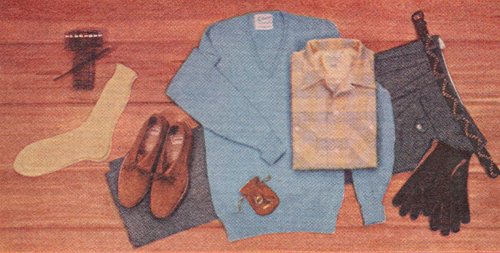
http://www.artofmanliness.com/2010/05/13/how-to-build-your-wardrobe-2/
In How to Build your Wardrobe Part I we discussed why a man’s clothing is important, broke men up into four groups, and then listed the clothing they would need. In How to Build your Wardrobe Part II we will give you 5 general wardrobe building guidelines and expand on the clothing checklists by discussing in detail many of the items we listed in Part I. Did we miss something? Let us know in the comments!
5 Wardrobe Building Guidelines for Men
1. Master interchangeability – The secret of the best dressed men is that they wear clothing that neither draws attention nor strikes observers as flamboyant; they are simply well put together. The good news is this can be achieved with very few sets of clothes, and if selected carefully a man with only two suits, four dress shirts, four ties, and two pairs of shoes has 64 different combinations at his disposal (2x4x4x2=64 ). The key here is making sure your clothing is interchangeable; a core of classic colored suits and dress shirts complimented with time tested tie patterns will yield a higher return on investment than any trendy garment that only matches one other item in your wardrobe.
2. Make sure your clothing fits – The clothing in your wardrobe should fit your body as it is today not as you wish it to be two months from now. If it’s too tight, look to have it let out. If it’s too large, learn to how to select a tailor and have alterations made.
3. Select classic colors, patterns, and styles – There are colors that compliment your complexion; discover what they are and use them to your advantage. Look for patterns that existed when your father bought his clothing – chances are they’ll still be around when your son borrows your ties. Always select timeless style in your high dollar items and avoid trends like the plague.
4. Avoid cheap, instead seek value – Purchase quality; you’ll often pay more but in the end it will save you money. How does that work? Simply put, you’ll wear the clothing more often, feel better when you wear it, and it will last longer. Those $35 dress shoes that you hate wearing because they look cheap and are uncomfortable are wasted sitting in your closet; those $350 Allen Edmonds that you wear every chance you can and receive compliments on every time you wear them become a great investment when you find yourself having worn them 100 times in the last year.
5. Give yourself time – Building a wardrobe can take a decade; the time frame is important as it not only gives you time to select items that are priced in accordance with your budget, but it gives you the time to develop and refine your style. No matter how much you read and plan, a man’s style evolves over years as he perfects his personal presentation to the world.
Clothing Specifics
The Foundation Suits
Every man should own at least one suit or equivalent garment in accordance with his heritage. It should be pressed, clean, and ready to go at a moment’s notice. I have a client who works as a computer programmer; although he wears the shirts and trousers we made for him daily, he rarely wears his custom suit as his Microsoft office has a relaxed dress code. Two years ago he had the opportunity to attend a dinner with Bill Gates; he was given 6 hours notice and it was at one of the fanciest hotels in town. When opportunity presented itself, he was prepared and seized it; the sad part is many of his colleagues missed the chance because they didn’t even own a jacket.
If you own only one suit, ensure 1) it fits, 2) its dark in color, and 3) its timeless in style. To ensure proper fit, first learn what it is and then find a tailor who can alter your suit. Dark colors are important as they are the most formal and are more versatile than lighter shades. And by timeless style, I mean you should be weary of trends like skinny or overly thick lapels, suits with more than 3 buttons, or with signature style aspects that look good to you today but will not stand the test of time (that dragon embroidery on the shoulder is a bit too much). Most men look sharp in a charcoal grey, single breasted, 2 or 3 button jacket with double vents and 3 pockets (2 side flap, one left breast). Your trousers should be made from the same fabric as the suit and if pleated have a cuff or if flat fronted, have none.
Other fabrics you should consider for your core suits are medium grey and navy blue solids, grey, charcoal grey, and navy semi-solids, and black if you have very dark hair and medium to dark complected skin. Try to purchase a suit made from 100% wool, although price sensitive men can find blends that have an excellent hand and breathe just fine under limited use. Early on in your wardrobe building journey you should avoid memorable patterns (if people remember it, you can’t wear it later in the week with a different shirt) and double breasted suits (not flexible, hard to dress down, save for a 5th suit).
-
The Core Dress Shirts
The core dress shirts in a man’s wardrobe should fit him and be simple in design. The first three dress shirts in your wardrobe should be solid in color (white or a shade of blue, the darker the less formal). When looking at style, look for point collars and cuffs that fit the image you are trying to present. I love French cuffs, but for most men they are not a style they’ll use enough in their first set of shirts to justify their purchase. Instead, keep it simple with single barrel cuffs. As for fit, ensure the shoulders and neck are as close to perfect as you can find. Remember that every brand has a different set of models they use to design their clothing’s sizes, so a medium in one brand does not mean you’ll have the same fit in another. And if you have to compromise, purchase a larger fit. Sleeves can be shortened and stomach fabric can be tucked; making a shirt bigger though is not an option.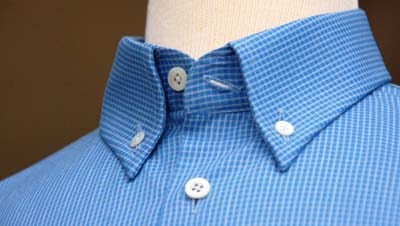
Casual Button Down Dress Shirt Collar
Once you start to move past three dress shirts, you should consider semi-solids, stripes, and checks. The key here is to remember that the plain fabrics are more formal while the fabrics with complicated patterns are less so; also for interchangeability purposes you’ll want to ensure your base collection of dress shirts are devoid of features that make them too memorable. As for patterns, pick and choose based off of which style best compliments your body type. Point collars, medium spread collars, and regular business collars are all solid options for 80% of the population – if you have a round or extremely thin face, you’ll want to choose a collar that balances your ? features. On cuffs, single or two button barrel cuffs should be on the majority of your shirts although you could substitute them for French cuffs if that’s your style. Finally, avoid dress shirts made from fabrics with more than 50% man-made fiber; try to find 100% cotton and avoid silk unless you can afford high dry cleaning bills.
Footwear for Men: Your First Dress Shoes & Boots
The first pair of dress shoes a man owns should be black in color; the second pair can be either black or brown, with the determining factor being the color of the suits in his wardrobe. Black is more formal and less interesting but more versatile. Dark brown shoes, assuming their style matches, can be worn with any outfit except black tie. As to style, look to own at least one pair of plain or cap toe oxfords, and a pair of slip-ons for when you travel. Slip-on styles such as Chelsea boots and monk straps are great for moving through airport security with ease, although they are less formal than their laced brethren.
The total number of dress shoes a man should own depends on his needs, but generally speaking he should have at least 3 to 4 pairs that he can rotate through. Rotation is important because while your shoes rest with cedar shoe trees inserted, the wood draws out inner moisture and reshapes the leather which will lengthen the life off all of your shoes considerably. And always brush away dirt after every wear and shine and polish when needed or after wearing them 3 times. If you live in an areas with heavy snow and rain learn how to weatherproof your shoes. Finally, avoid attention grabbing colors and shoes made from materials that require heavy maintenance and are limited as to when you can wear them. Although blue suede shoes make for a good song, they are not for rough winters where salt and water can quickly cause irreparable damage. Also avoid footwear manufactured with extreme square toes or made from shoddy leather and with poor construction.
Building Your Tie Collection
A Simple Match – Charcoal Suit, White Shirt, and Striped Tie
When you wear a necktie, you want it to compliment your outfit, not dominate the conversation. As for the number of ties in a man’s wardrobe, I recommend three neckties for every suit. Classic tie colors include blue, green, reds, and gold while classic patterns are striped, dot, plaid, club, foulard, and paisley – start with simple solids and stripes; when you move past a half dozen ties in your wardrobe you can start purchasing brighter and more complex patterned neckwear. Here is a great guide on how to match a tie with a shirt and suit.
Casual Shoes & Boots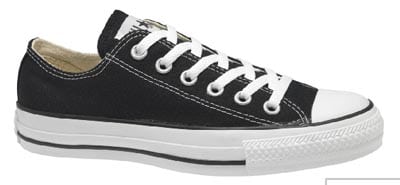
Classic Converse
The difference between a dress and casual shoe is the nature of the clothing that it is intended to be worn with. The types and styles of casual footwear are wide enough to fill a large book – in the dressier range are moccasins and both tassel & penny loafers. More casual options are Converse’s classic chucks and Timberland’s line of loafers and boat shoes; it’s important to note local climate and culture has a strong effect on what casual footwear is worn. Growing up in Midland the roper boot was the footwear of choice for many men working in the dry heat and dust of the Texas oil fields and ranches.
Consider stepping a bit out of your comfort zone here. Don’t limit yourself to sneakers – saddle shoes are a bit dressier but infinitely more stylish and if taken care of will last decades and draw compliments. Instead of sandals, look at boat shoes which can be worn without socks and are more presentable than displaying to the world your ? toe nails.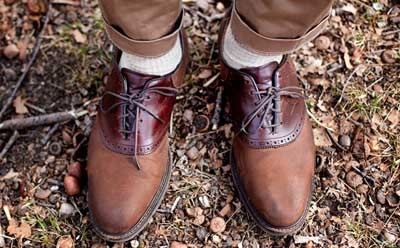
As with dress shoes, the number of casual shoes a man needs depends on his lifestyle. When looking for casual shoes for your core wardrobe, give more weight to muted colors that will never go out of style. Brown, beige, black, and occasionally navy and other assorted low tone colors are solid choices. The more it draws attention to itself with color, the harder it will be to match and wear more than a few times a month. Seek out quality and you can expect a long life from your footwear if you take care of it. When worn in conjunction with similarly styled clothing, it will look great today and over time develop a worn look that will make it look even better. Finally, replace worn out footwear that is torn or permanently stained. Although casual footwear doesn’t have to have a shine like dress footwear, it should still be neat, clean, and presentable. Rotate your shoes, and store your unused pairs in a dry place where they can air out – this prevents mold growth and smells from developing.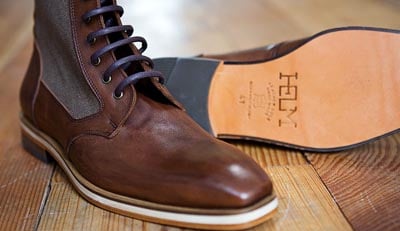
A pair of semi-casual boots I scoped out in Austin, Texas at the men’s store Stag on South Congress. Thanks for driving me there Eric!
-
A Man’s Belts
Your belt’s color and style should closely match the shoes you would wear with them – it’s very possible that a man with 4 pairs of shoes will need 4 belts. In fact, I recommend when you buy your shoes to buy a belt that matches while you have them in the store with you – you can always return the belt if you feel the current belts in your wardrobe are sufficient. As for matching, typically the thinner the band and the simpler the buckle the more formal the belt is. And always match metal with metal – monk strap dress shoes with a silver buckle should be worn with a thin belt with simple silver buckle.
Denim Jeans
On the left we have denim you can wear with a sport jacket – on the right are jeans more suited to an untucked T-shirt.
Jeans are arguably America’s greatest gift to menswear. They have come a long way from their humble beginnings as work trousers to their current iconic status as the trouser of choice for lumberjacks and movie stars. Equally at home with a T-shirt and sneakers or monk strap slip-ons and a blazer, jeans are a rare combination of image, functionality, and comfort. It’s these three traits as to why every man should have at least a few pairs of denim jeans in his wardrobe.
By their very nature all jeans are casual; however, there are levels of separation and the darker the jean the more “formal” it becomes. Thus it’s better to mix a sport jacket with dark jeans than light jeans, although the latter can be pulled off especially in the summer. Anything with obvious signs of wear or holes should be reserved for more casual wear unless you have sold over 10,000 albums. What you own depends on your lifestyle and needs, but have at least two pairs that are dark and look sharp when worn with a dress shirt. For those tired of reading, here is a great video on understanding quality denim. For those who want to read more, here is a more detailed analysis of denim and what the difference is between a $5 and $500 pair of jeans.
Slacks
Slacks, or odd trousers, come in a wide range of styles and fabrics and are differentiated from suit trousers as they have no matching jacket cut from the same cloth. The dressiest slacks, aka those suitable for wear with an odd jacket, are cut from a dark wool and styled in the same way suit trousers are. Once we start moving toward lighter colored fabrics cut from cotton we become less formal, with chinos being the most popular example.
I advise most men to own at least one pair of dark wool trousers and one or more pairs of chinos in various colors. Chinos are dressier than jeans and an excellent option for warm weather. As for the wool trousers, most men are best served if when they buy a grey suit to purchase an extra pair of trousers as well. Because no matter how often I tell them not to, most men will wear their suit trousers as odd trousers at some point. Knowing this, it’s better to have two pairs, that way, when you tear or stain them, you will not have lost your whole suit.
Button-up Short Sleeve Sport Shirts
Distinct from the infamous short sleeve dress shirt, the button up dress shirt has a closer fit in the torso and often certain style features such as epaulets, double button patch pockets, and finished straight bottom so it can be worn untucked. It’s a fine shirt to wear on weekends or evening out in Vegas, but understand its limitations (and the limitation of all shirts worn without a jacket) are that they will draw attention to a large midsection. In general this shirt will move with trends, and it should be viewed as a fashion piece more than a classic item in the wardrobe. I like to have two in my wardrobe, one light and one dark.
Polo Shirts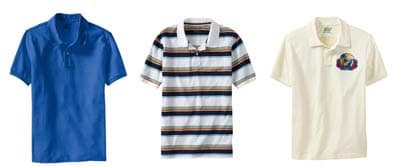
From Left to Right, we can see how Polo Shirts Rank in terms of Casual (Safe for Work on Friday) to Ultra-Casual (Beach Wear)
The polo shirt’s origin is in sport – developed by the great French tennis player René Lacoste out of the frustration he felt for traditional clothing on the court; it was later adopted by other gentlemen sports such as polo and golf. Today there are dozens of types and brands. When choosing one remember this hierarchy: Solid muted colors made from smooth and soft cotton or wool are the dressiest – patterned polos made from rougher cotton weaves are the most casual. While companies like Lacoste make polos appropriate for casual office wear, you’ll want to be careful wearing the polo you picked up for $5 at Old Navy to a business event. I recommend keeping your professional polos separate from your “play” polos, and stick with solid classic colors until you have a half dozen.
Shorts
Shorts are casual wear; there is no getting around this. Think twice about wearing them to any company event unless it involves sport, water, or a luau in Hawaii. Now I know many of you are thinking the author must be some type of stuffy old guy, but such is not the case; my point is that around the world shorts are not as accepted as they are US, and that they are rarely if ever acceptable when looking to make strong first impressions. With that being said, when a man wears shorts he should wear pairs that provide ample room in the hips and rise no more than 6 inches above the knee and never extend past it. Cotton and linen are great choices because of their fiber properties. Classic colors such as tan and khaki are two great colors to start with; be careful with white as it draws attention and stains easily. As for swim trunks, they are for swimming. Unless in San Diego, then you can wear them anywhere as long as you are never more than 5 feet from your surfboard.
Sweaters
The two most important attributes of a sweater are fit and the type of fibers used in its construction. Color and style are important, but more so than other garments a sweater must be functional. This article (http://www.realmenrealstyle.com/men-wearing-a-sweater-to-work/) is a great place to learn more about sweater styles and their fiber properties. As for the sweater types a man should own, this depends on both the climate he lives in and his budget. Men in living in cool regions are well served to own four plus classic sweater styles that they can wear into the office; men from warmer regions can get away with one or two they pull out when they travel. Finally, when selecting sweaters for your wardrobe pay very close attention to fit – altering a sweater is an art and most alteration shops won’t touch this type of high risk work.
Sports Jackets & Blazers
If a man is to own only one odd jacket, he cannot go wrong with either a classic navy blazer or wool sport jacket made from a dark solid or semi-solid fabric. Distinct style attributes such as silver/gold/brass/leather buttons, patch pockets, or a ticket pocket are key to signal the jacket is indeed not part of a suit. Navy blazers, because of their formal history and fancy buttons, are more formal than sport jackets and may not be the right choice for a man who rarely wears a suit – however they can be dressed down by ensuring they are single breasted and by selecting horn or mother of pearl buttons(a great summer look). Sports jackets on the other hand can range from sleek dressy worsted wool to more casual tweeds, and are a great compliment to a country living man’s wardrobe. I live in a rural town of 1000 people, and never feel out of place wearing my sport jackets and dress shirts with jeans.
-
How to Build Your Wardrobe: Part III – Men’s Hats, Watches, and Other Accessories
http://www.artofmanliness.com/2010/05/28/how-to-build-your-wardrobe-3/
In How to Build Your Wardrobe Part I we discussed why a man’s clothing is important, broke men up into groups, and listed the clothing they need. In How to Build Your Wardrobe Part II we gave you 5 general wardrobe building guidelines and expanded on the clothing checklists. Now in How to Build your Wardrobe Part III, we’ll discuss hats, watches, and other accessories that add to a man’s presentation.
Four Simple Guidelines When Choosing Accessories
1. Accessories add flavor to your clothing, but even great accessories cannot help a poor foundation – If you haven’t read Building a Wardrobe Parts I and II, please do so. I do not want you to form the impression that accessories stand alone – they do not. Think of them like a spice; they can only bring out the best in a dish that starts with quality ingredients.
2. Quality is good, meaning is great, finding an heirloom that embodies both is perfect –Some accessories are special in that they have lived a life before you, and within them is a sense of history and quality impossible to find in something new. It’s a very lucky man who finds himself with his grandfather’s watch worn through World War II or a hat that was witness to Martin Luther King Jr. marching at Selma. Wearing a piece of history is special; it can give the wearer the strength to go out and create a bit of history himself.
3. Use the accessory you purchase, and use it often - The writer Alan Flusser says it best in that the most expensive items a man owns are the ones he never uses. Ensure that the accessories you purchase for your wardrobe are ones that will stand the test of time and that you’ll find occasion to use. A handsome tie clip is wasted on the man who never wears a tie.
4. Function first, style second….but not distant second– Most timeless men’s accessories serve a purpose – pay attention to performance first. If you have to pay a little extra for style, weigh your options and then take the plunge. You want something that not only works, but looks great doing its job.
A Man’s Accessories Overview
A Man and Hats
1. Building the Courage to Start Wearing a Hat – I won’t say that every man should have a hat in his wardrobe; however, I do think every man should strongly consider one, especially if it can practically serve him. Do you live in rainy Seattle? Consider a hat that will compliment your raincoat. Spending hours outside in the hot Tucson sun? Look for a lightweight and breathable hat that will shave 20 degrees off your day. Remember function first, style second……but don’t forget about style, as you want a hat that you love to wear.
2. A hat instantly sets you apart – Wearing a hat such as a fedora is rare these days, especially when worn properly and with confidence. Although I don’t advocate setting yourself apart by simply being “the hat guy,” if used correctly it can be a distinguishing feature that helps cement your place in a casual acquaintance’s memory bank. In the words of the great Las Vegas designer Nudie Cohen “Better to be looked over than overlooked.”
3. Hats increase your perceived height – Hats create the illusion of added height; in one study men who wore hats were on average granted an extra two and one half inches by observers asked to guess their height. Why is this important? Because height commands respect and authority in a first encounter. Just ask any tall man who is used to being the first person people see when he enters a crowded room or on the other extreme a short man who can often feel overlooked.
Drop the Baseball Cap – Wear a Real Hat!
Basic Hat Etiquette – A hat can be worn outdoors at athletic events, while riding public transportation and while in the lobbies and elevators of public buildings. Take the hat off when you enter a home, during a meal, at work (assuming you are indoors), when indoors and conversation is expected, and when you wish to show reverence (for example when meeting a religious leader or the playing of a national anthem). The key point to remember is that it covers part of the head and this can make you seem “aloof” and “distant;” understanding this, you can judge the situation and make the decision to wear the hat or take it off anywhere.
Male Jewelry – Watches, Rings, Cufflinks, and Bracelets
I’ll address each of these separately –
Timepieces: A Man’s Watch-It has been argued that with all the electronic gadgets we surround ourselves with, the man’s watch as an accessory is becoming antiquated. I’m not going to take a stance either way, but as of 2010 a timepiece worn on the wrist is still a classic accessory. If a man enjoys wearing a watch, he should have at least two in his wardrobe – one for sport and one for more formal occasions. The general rule is the more simple the watch, the more versatile and formal it is. Digital watches with plastic bands are for sport while large timepieces with multiple moving hands, gauges and metal bands are for the office. The most formal watches are simple timepieces with a single set of hands and leather band. If you’re attending a black tie event, forgo the watch altogether; the logic here is that a gentleman does not worry about time at galas such as these.
Rings – Wedding rings are always permissible to be worn. Beyond that, rings are a matter of taste, and depending on your choice of ring and environment, they can symbolize membership, wealth, or in some people’s eyes, excess and extravagance. Both school and fraternal rings are fairly common in the US, and rarely raise an eyebrow. However, beyond two rings a man’s hands start to look adorned, especially if he has relatively small hands. I wouldn’t wear more than two rings, preferably one on each hand.
Cufflinks – If a man owns a French cuff shirt he needs cufflinks and/or cuff knots. The number you need depends more on how flashy your cufflinks are instead of how many shirts actually need them (although a general guideline is two sets for every shirt that requires them). The logic here is that simple conservative cufflinks, such as plain silver or solid colored knots, draw little attention to themselves and create a positive but not deeply memorable impression. A set of Elvis cufflinks on the other hand are going to be remembered and are therefore limited in how often they can be worn. I advise you start your collection with simple, timeless designs; once you have three or so sets of links and perhaps 6 inexpensive knots, then you can introduce a few fun cufflinks.
Bracelets – Generally speaking, bracelets are a tricky area for men. In many cultures around the world they once symbolized power and position . But today a jeweled bracelet on a man is more of a fashion trend and not something I recommend for the average guy. As for “charity wristbands,” you should only wear a band for a cause you really believe in.
-
Sunglasses
Your sunglasses should be clean and compliment both your face and the situation you’ll be wearing them in. I recommend that a man have at least two pairs of sunglasses in his wardrobe – a classic, quality pair for every day use that can be worn with either a suit or polo shirt and a cheaper, disposable pair that can be worn in situations where the likelihood of them never being seen again is high (boating on Lake Travis). If you are active in outdoor sports, you’ll at some point want to consider a pair of athletic wrap-around sunglasses. However, understand these sport sunglasses should not be worn with business attire.
Volcano Sport, Wayfarer & Aviator Sunglasses
Good quality sunglasses are not cheap – in fact it took me a decade of putting up with bad eyewear before I finally bought a pair of Maui Jims. However, like with most things, once you buy quality you’ll find it lasts longer, especially when you take better care of it. Purchase a protective case and use non-scratch pads for cleaning the lenses. I used to go through 2 or 3 cheap pairs of sunglasses a year – it’s now year 5 for my Ka’Anapalis and they only have one very minor scratch and look as great as they did when I first purchased them. Quick note – know what you want when it comes to shades, and always be looking for clearance deals. They can be found!
Tie Bars, Tie Chains, and Tie Tacks
The tie bar and its cousins are a great example of an accessory that serves a purpose – it keeps your tie from flying over your shoulder on a windy street and from falling into your food at a meal. Tie bars also can add a bit of pizzazz to an otherwise dull ensemble and a simple stripe of gold, silver, or some other metal is always acceptable. I prefer to wear a tie clip at an angle to counteract the rigidity they connote. Other variations include the tie chain, which works in much the same manner, but instead of a fixed bar holding your tie in place, you have a drooping chain. The least favorable variant is the tie tack, as that it requires poking a hole in the tie which can damage a silk. I do not recommend the tie tack unless you are wearing it with a knitted woolen tie. If you own more than a few ties and wear a tie daily, throwing in a couple tie clips is a great way to add flavor to your suit, shirt, and tie.
The Pocket Square
A tastefully folded pocket square placed in the suit jacket’s breast pocket can lend some color and panache to an otherwise boring navy suit. For the first three suits a man owns, he should have three pocket squares for each, the first two being a solid cotton and silk white. Past that, it’s a matter of taste and personality. As we’ve written entire articles about this already, I’ll simply point to an Introduction to Pocket Squares and How to Fold a Pocket Square for more information.
Wallets and Money Clips
Which wallet you choose depends on your needs. If you’re a frequent traveler, a billfold that is large enough for a passport, pen, and various other incidentals is handy. A slim billfold that fits in the back pocket, however, is more suited for daily use. Just remember that if you have the space, you’ll fill it. Therefore the best way to avoid walking around with two inches of backside bulge is to own a wallet that doesn’t tolerate that type of expansion.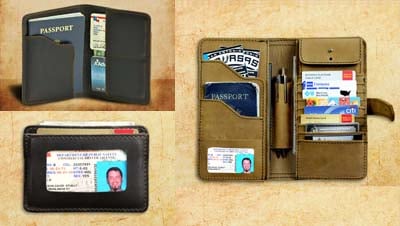
Money clips are a great alternative to carrying a billfold; they fit naturally in the front pocket (a more secure area) and force you to trim down what you carry. In doing so, a money clip helps eliminate the danger of carrying all your eggs in one basket – when a pickpocket strikes you’ve lost a little bit of cash vs. your social security card and a half dozen credit cards.
Briefcases, Notebook Cases, and Handbags
I recommend you have at least one simple dark colored briefcase in your wardrobe. Leather is a classic choice, and black or dark brown are safe colors. If you are a professional who frequently travels for business, you should strongly consider owning two briefcases, a small one for daily use and another larger one that can hold a week’s worth of paperwork and your laptop computer. In levels of formality, dark colors and a simple build are more formal than light colors and bags with all types of straps and pockets.
The Boutonnière
A flower is the simplest, least used, and in my opinion most perfect accessory a man can add to compliment his clothing. It requires strength to wear, its life is short, it has a storied history, and on a spring day it can be found for free. A boutonnière is properly worn on the left breast, near the heart, and keeping it simple and subtle is the key to pulling it off.
Final Note on Accessories
Accessories are like the service and ambiance surrounding a fine meal – they add to and enrich the experience. The finest accessories in the world cannot help a man who doesn’t care about his appearance; however, the proper use of them can transform a decently dressed fellow into an extraordinarily dressed gentleman.
-
I'm hip to this, i went to Miltons here found my current size, and just been ? with whatever 3 piece suits i can find off ebay. Imam start posting my what i wear collections a little more here. i be missiing you fashion Forward, pause.
I found that my favorite fedoras are from target. Other ones I buy are too small for my big head.
Btw ? love a man's shoe game, but you dont have to even over spend on that either. I'll get back to this tho.
-
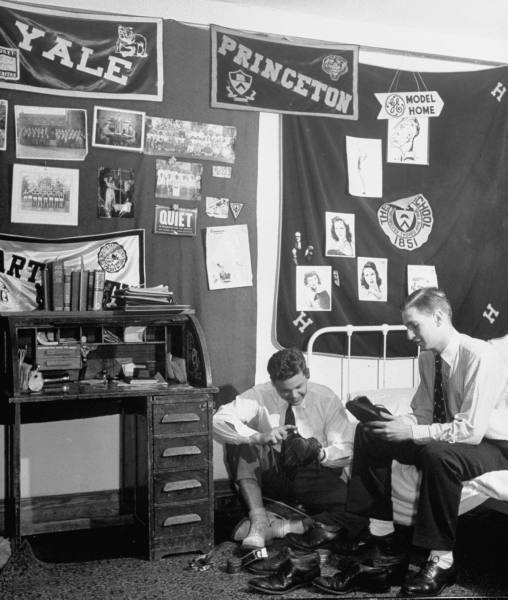
How to Build Your Wardrobe: Part IV – Protecting, Storing, and Cleaning your Clothing
Introduction
First in How to Build Your Wardrobe Part I we listed the wardrobe basics for several different kinds of men. Next in How to Build Your Wardrobe Part II we went over these basic items in more detail. In How to Build Your Wardrobe Part III we covered hats and other accessories. In this final installment of the wardrobe series, we’ll cover how to maintain and protect your investment.
Maintaining a Wardrobe
We live in a disposable society full of waste, one marked by single-use plastic water bottles and single-use plastic grocery bags. It’s little wonder that this way of doing business has spread to the clothing industry; instead of purchasing clothes whose looks improve over a decade, we select items based on price alone, items built with shoddy workmanship and poor quality materials. After a year when they wear out (as they were made to), we throw them away, the logic being it’s cheaper to buy new than repair the old.
I challenge this way of thinking, and offer an alternative. When building your wardrobe, invest in quality items that may initially be more expensive (although not always– click here for dressing sharp on less than $200), but over the long run are a better investment. A more expensive piece of clothing that lasts for decades will end up costing less than a cheaper item that quickly wears out and must be replaced over and over again.
Maintaining quality clothing and footwear requires care, but the reward is a personal presentation that gets better with time. Imagine shoes that get more comfortable and look better every year you own them – shoes that you wear at your daughter’s baptism and two decades later at her wedding.
This article is about the care required to maintain your clothing and footwear for decades.
Why Maintain and Protect Your Wardrobe?
1. Your clothing will look better.
Good clothing that is properly maintained always looks better than more expensive clothing that is neglected. The shine of a pair of buffed shoes, the complimentary fit of tailored trousers, and the sharp collar points of a freshly pressed dress shirt are reflections of well maintained clothing.
2. Your clothing will last longer.
Even quality clothing will fall apart if abused; sadly we are so used to menswear being disposable that the idea of ironing, brushing, and repairing our clothing is a foreign concept to many of us. The simple fact is this: well made garments can last for decades. Recently the Duke of Windsor’s wardrobe was sold at auction. More amazing than the fact that his clothing was still wearable (despite much of it being 70 years old) was the way a person could see how a former King of England was so attached to his favorite shirts that he repaired them with material cut from his own shirt tails to ensure the fabrics matched.
3. It will save you money.
An ounce of prevention is worth a pound of cure. All it takes is a few moths to do hundreds if not thousands of dollars worth of damage to your fine woolen clothing. Although re-weaving can in some cases repair holes up to one inch in diameter, why go through this painfully expensive process when proper preparation before packing can eliminate the risk of your suits being eaten? Protecting your wardrobe costs much less than having to buy replacement clothing every few years.
4. It instills discipline.
Proper wardrobe maintenance requires discipline; it’s ongoing and requires us to carve time out of our busy schedules to address it. Like servicing your automobile, tending to your home, and maintaining a strong relationship, the discipline required to properly and consistently maintain your wardrobe is a small reflection of the larger way in which you live your life.
Day to Day Maintenance
Brushing Your Suit Jackets and Trousers
All it takes is 30 seconds and a clean brush with stiff bristles to clean your clothes after each wearing. Brushing your suit jacket and trousers after each wear is important because it removes the dirt and food that has accumulated on the outer layers before they have the chance to settle into the fabric. Once this happens, the fabric can be damaged as the food bits decompose and/or attract insects. A huge upside to brushing your clothing is that it can double to triple the time between visits to the cleaners – simply brush and air out and you’ll be ready to go in a 24 hours.
Polishing and Protecting Your Footwear
We’ve already written about this extensively – Visit the classic AOM articles “How to shine your shoes” and “How to waterproof your shoes.”
Shine Your Shoes Like A Soldier http://www.artofmanliness.com/2008/07/29/how-to-get-the-best-shoe-shine/
Waterproofing Your Shoes – A Man’s Guide to Weather Resistant Footwear
http://www.artofmanliness.com/2010/03/03/waterproofing-shoes/
Minor Garment Repairs & Alterations
Most large problems start off as small ones; it’s our lack of immediate action that leads to these issues escalating. Are your trousers too tight in the backside? You’ll very likely split the seam before you lose the weight. Best to have the trousers opened up an inch – they’ll look and feel better. Does that suit jacket button look like it’s going to fall off? Cut the string and repair it tonight; once it falls off and you lose the button, you’ll either spend hours trying to match it or spend money on an entirely new set.
A Man Needs to Know How to Iron His Clothing
I learned the fine art of ironing while an officer candidate at OCS; every night, during our “sleep time,” we’d spend hours preparing for inspections which meant uniforms had to be crisp, clean, and perfectly pressed. Although non-iron fabrics are quite popular, especially with traveling businessmen, they fail to compare with the look and feel of freshly pressed 100% cotton shirts. Ironing is what gives a shirt its body and character; the sharp creases at the collar, the perfectly pressed French cuffs, and the smooth drape of a perfectly pressed back signal attention to detail. Here’s how to iron a dress shirt properly. How to Properly Iron a Dress Shirt http://www.artofmanliness.com/2011/04/06/how-to-iron-shirt/
Steaming – Know What You Are Doing
Steaming, whether using a professional steaming machine or an iron with this built-in function, is an excellent way to quickly remove wrinkles from delicate fabrics. Unlike ironing, there is less chance you’ll damage the fabric as you do not touch it with hot metal. However, steam is not as effective on cotton for this very reason, and it’s almost impossible to get a crisp look when steaming a cotton shirt. Also, great care should be taken when steaming a wool jacket or other pieces of clothing that are shaped; it’s very easy to blow out seams and create a billowed look where the fabrics connect.
-
How to Properly Store Men’s Clothing & Shoes
General Guidance & Environment
Try to store your clothing and footwear in a cool, dry, clean, and dark environment. All four of these factors are important to ? bacterial growth, discourage insect infestation, and prevent UV damage and color fading. If clothing is going to be hung for more than 1 month without being worn, consider placing it in a breathable garment bag to prevent dust accumulation.
Hangers
As Washington D.C. image consultant Grant Harris likes to say, “Wire hanger are useful when you lock your keys in your car – not in your closet.” His point is wire hangers can permanently damage your clothing, especially woolens as they create unsightly creases that are very difficult to remove. Spend a little extra and purchase handsome wood shirt hangers (at least ¼ inch thick) and wood suit hangers (at least 1+ inch thick at the shoulders). In the case of the suit hangers, you’ll spend at least $5 to $20 each, but this is a small price to pay to properly hang a $500+ jacket.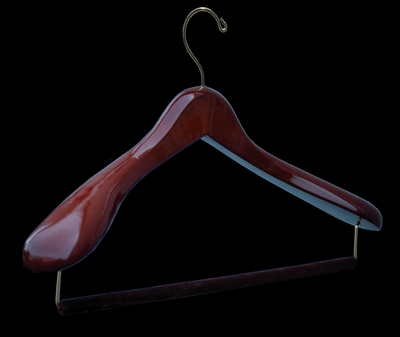
A proper Suit Hanger – Photo courtesy The Hanger Project
Shoe Trees
Wooden shoe trees should be a mandatory purchase for any man who wants to get more than a couple years out of his leather shoes. They maintain the shape of the shoe and prevent the leather from warping in a way that would promote premature cracking. They also absorb excess moisture from the soles and leather.
Wool Protection – Moth ? , Cedar, Lavender and a Tight Seal
Wool is a luxury fabric with amazing properties and a long history of use in society; unfortunately, it’s expensive and highly susceptible to damage if not cleaned and stored properly. It’s important that before storing and sealing your wool clothing you have it professionally cleaned. Although I’m not a fan of the chemicals used in the dry cleaning process, they do ? the microscopic insect eggs that have potentially been laid on your jacket. If you have a large freezer that’s not in use, it’s also possible to ? any eggs by vacuum sealing the clothing and then freezing it for 72 hours.
Moth ? are a commonly used insect deterrent. However, they are a harsh option as they rely on a vacuum seal that traps in toxic fumes, and they often leave a bad smell on clothing. I personally prefer natural alternatives to moth ? such as cedar, lavender, rosemary, cloves, and other aromatic repellants. Although they are somewhat less effective than moth ? and need to be replaced and refreshed, these choices do not contain paradichlorobenzene.
Finally, be careful with mixing un-cleaned wool with dry cleaned wool – the dry cleaning process only kills eggs on the garment; it provides no protection days after the cleaning. Hence one infested wool cap thrown on top of a stack of wool suits to be sealed for the summer can lead to disaster.
Cotton Protection – Dry & Cool & Breathable
With cotton, you have little to worry about when it comes to moths. However, cotton can still be permanently damaged if it’s exposed to moist conditions for prolonged periods – mildew will literally digest the cellulose fibers. Also, because of its durable reputation, we often overexpose the fabric to alkaline bleaches or do not immediately treat acidic stains such as juices. Remember cotton is tough, but not indestructible!
Organizing Your Closet – Dealing with Limited Space
The space a man has for his belongings depends on his home’s size, age, and location. Personally, I have a tiny amount of closet space; my 110 year old Victorian house was designed with a master bedroom closet that allows 6 feet of hanger space. My wife is kind enough to give me 18 inches of that. As a clothier how do I deal with such limited space?
The key to dealing with limited space is to rotate your clothing. If you’re not going to wear it in the next month, fold it, pack it, mark it, and store it. By doing this, I have at my fingertips only the clothing I need; when the weather begins to turn I’ll simply rotate to jackets and shirts more appropriate to the season. What you want to avoid is an overstuffed closet. As a rule of thumb I try to maintain at least 1/2 inch between garments for airflow and ease of selection.
Cleaning Men’s Clothing – Cleaning Methods That Can Extend the Life of Your Garments.
Hand Washing
Just because you own a washing machine, this doesn’t mean you have to use it every time you get a small coffee stain on your favorite dress shirt. Consider simply hand washing the garment in a small tub of water. Let it sit for a few minutes and apply a concentrated amount of detergent to the stained areas and spot clean. Rinse and wring.
Hang Dry
Before the days of the dryer, there was the clothesline. And although I love how the dryer makes the necks of my undershirts return to their original size, I do not expose my quality clothing to the extreme heat and tumbling as a dryer slowly destroys clothing (Where do you think all that lint comes from? Yes, that is your clothing being torn apart, bit by bit). Instead, I simply pin them on a clothesline in my basement, and within hours the shirts are dry. Need the shirts sooner? Simply iron the shirt while it’s still moist and turn off the iron’s steam function – use the shirts own moisture to better press the cotton.
Specialty Cleaners
Not all detergents and cleaners are created equal. Although detergents will remove most stains, they are ill equipped to handle persistent or hard set stains such as armpit discoloring caused by antiperspirants. It’s worth trying a variety of cleaners before you throw away that white dress shirt – detergent boosters such as Oxiclean or specialty cleaners such as sweat stain removers are viable options and may just save your favorite piece of clothing. Beware of overdoing it though – I once tried soaking a shirt in a 50% concentration of bleach overnight hoping to remove the stain. Instead I was left with half a shirt.
A Man’s Wardrobe Series – Conclusion
I hope you’ve enjoyed the Building Your Wardrobe series – Brett and I felt there wasn’t much quality information out there on the web concerning the specifics of building a wardrobe. Ten-thousand words later, we hope these articles have helped change that.
Written by
Antonio Centeno
President, A Tailored Suit
-
Damn, y'all went and stickied this thread. Rex is honored and I'll do my best to find information to post information that is relevant to the topic.
https://www.youtube.com/watch?v=RgMgBR79jDg#t=10
How To Find A Local Tailor - 7 Tips To Choose A Seamstress - Locate Tailors Seamstresses
http://www.atailoredsuit.com/how-to-choose-tailor.html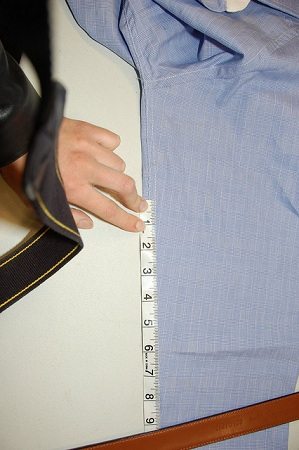
How to Choose a Tailor
1. Educate Yourself
2. Tailor Recommendations
3. Tailor’s Communication Skills?
4. When is the Tailor satisfied?
5. Does the Tailor Understand Style?
6. Samples of the Tailor’s Work
7. Is the Tailor available?
Introduction as to How to Choose a Tailor
Choosing a tailor used to be easy; you either went with the tailor who had been servicing your father or you headed to the knowledgeable suit salesman who would make the proper introduction. Today unfortunately, the task is harder – good tailors are hard to come by, and the average menswear salesman does not have the knowledge to point you in the right direction. In this article, I equip you with the tools to find a reputable men’s tailor whose services can transform you and your clothing.
The below steps are in order of action to be taken, and are meant to be used in conjunction with one another to select a competent tailor. The first point is very important, and should not be skipped.
1. Educate Yourself before looking for a Tailor
Before you talk with a tailor or seamstress, you need to have a foundation in the basics of men’s style. The hardest thing for most men to do is to find a few hours to sit down and read about suits, shirts, and other menswear; however most men find once they start reading the material they become enthralled. Reading about the intricacies of quality menswear you start noticing men’s clothing details you never saw before; you pay attention to the fit of suit jackets, working sleeve buttonholes, and the break on a pair of trousers.
Stepping into the world of menswear, you’ll realize just how important your clothing is in sending messages about who you are. Most people you pass by everyday know you only by the clothing you wear; your appearance is the only way they can make any sense of who you are and what you do in this world. The suit, shirt, and tie combination you put on in the morning covers 90% of your body, and before you open your mouth this garment combination and the way it fits on your body announces who you are and signals to others whether or not you deserve attention.
To build a solid foundation in the basics of men’s style, I recommend reading any book by Alan Flusser, Nicholas Antongiavanni’s “The Suit”, or Bernhard Roetzel’s “Gentleman” and spending time in A Tailored Suit’s Style Guide. Once you have a foundation, you should then seek clarification and interact with knowledgeable people at places like Style Forum, an online community of men’s clothing enthusiasts. When you find you can speak the tongue of custom menswear, you are ready to start interviewing tailors.
2. Tailor Recommendations
Be careful here – most men are not selective in choosing their tailor, and stay with their current tailor only because they are unaware of a better option. Combined with the fact most men do not understand what proper fit is, it is very possible that a tailor who receives high praise only does so because of the cluelessness of his patrons. Do not assume because someone calls themselves a tailor or seamstress that they know anything about men’s style or can assess proper fit.
Take a critical look at your friends – who among them are smart dressers? These are the people you want to ask for tailor recommendations. You can broaden your search by asking women as well, but be careful. The way clothes fit on a man versus the way they should fit on a woman is very different. A skilled woman’s tailor does not necessarily have the right skills to tailor men’s clothing.
3. A Tailor’s Communication Skills
You now have a list of tailors – next you need to start talking with them. You can do this over the phone or even email, but your goal is to see if this is a person you can work with. Do they have good communication skills? Do they actually listen to you, or are they trying to push in a direction you know you don’t want to go down? Do they have time to talk, or are they in a rush? To be fair, you shouldn’t hold the last one against them if you call their office out of the blue – but any professional should be willing to put aside 20 minutes to speak with a potential client at a set time within a few days of calling.
You want to work with a tailor whom you feel confident in – this decision is very personal and should be based off the tailor’s knowledge and communication skills – ideally you find a tailor with strong skills in both areas. Unfortunately, a combination of the two is rare except in larger cities. You can have a very skilled tailor, but if he does not understand you or feels he should ignore your wishes and do what he thinks is right, both parties are going to be disappointed. Communication is vital, and making certain that both sides clearly understand and respect each other is key to a long term partnership.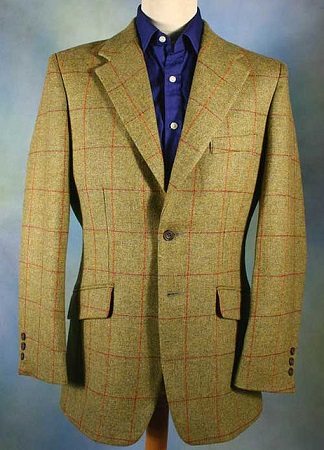
4. When is the Tailor satisfied?
There is one answer here; the tailor should not be satisfied until you are satisfied. This doesn’t mean that a skilled tailor or seamstress always gives you what you want or doesn’t make mistakes – no, a tailor really worth keeping is one who learns what your idea of the perfect fit is and constantly works to achieve this.
5. Does the Tailor understand style and timeless fashion?
I mentioned this earlier, but do not assume a tailor or seamstress understands classic men’s style. Although many skilled tailors are experts at building anything you can imagine, their eye for what color fabric or style of jacket suits a man is often at odds with reality. Culture differences can also play a factor here, as that many of the most skilled tailors today are native Chinese, Thai, or Indian – what worked in Mumbai in 1970 may not be applicable today. With your foundation in classic men’s style (see point 1), you should be able to figure out quickly if the tailor possess an eye for timeless fashion.
6. Samples of the Tailor’s work – Custom Suits and Tailored Shirts.
Pictures, example pieces, alteration miracles – you are looking for samples of their work that validate the tailor’s claims of greatness. If the overall garment looks good, spend a few minutes studying the details – does the stitching look secure and clean, is the build and silhouette something you want in your clothing. Be wary of a tailor who doesn’t have anything to show or happy customers to refer you to.
7. Tailoring turnaround times? Is the Tailor available?
The best tailors out there are very busy people. They have more work than they can handle, and unfortunately wait times of more than a month are not unheard of. Ideally you want a tailor who can attend to your needs quickly, especially when you need a quick fix before an important appointment. Be upfront about your needs here, as that most tailors will accommodate emergencies knowing it creates loyalty and goodwill.
Notice I didn’t mention Price – this is the least important factor and should be a minor consideration even for those tight on money. You want to find a skilled tailor who can help you realize your vision of the perfect custom fit. Saving twenty dollars and not getting what you want is a waste of money – spend a little more and getting exactly what you pictured is always worth it. -
The Men’s Suit: An Introduction
http://www.atailoredsuit.com/mens-suit-jacket-details.html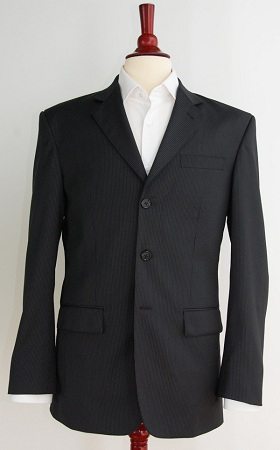
The men’s suit is, without question, the most universal and steadfastly appropriate item in a gentleman’s wardrobe. There are few occasions at which a man in a quality suit will be out of place, particularly if the wearer has a firm grasp of fashion and an established personal style. The path to elegant style begins with the suit, the cornerstone of men’s fashion. The first thing to make clear, before diving into cuts and suit fabrics and pocket ? , is that the rules of men’s style are guidelines gleaned across the decades from what has stood the test of time, and what generally flatters a given figure. These style rules serve as a guide to what will enhance ones features, but they are only a guide. The first and foremost rule of men’s style is never wear clothing that you cannot wear confidently. Confidence is an essential element of making any ensemble work, and garments that inhibit confidence do more to damage one’s appearance than any perceived enhancement can outweigh. This rule does not, however, provide free reign to wear whatever one wishes and declare it stylish because it is comfortable. It is merely a reminder that if one feels more comfortable in a style different than the guidelines given here would suggest, careful thought should be given to whether to follow the guideline or choose the more comfortable style.
At its most basic, a men’s suit is a jacket and trousers of the same cut, made from the same material, and intended to be worn together. Such a simple definition, however, denies much of the suit’s personality, and it is that personality that has made the suit a lasting and essential element of a gentleman’s outfitting. The primary element of a suit is its jacket, so our discussion will begin there.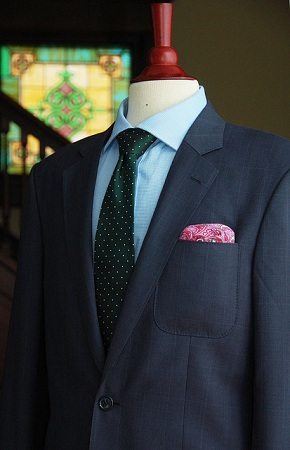
Suit Jacket Cut
Men’s suit jackets are defined by many things: the fabric from which they are made, including its color and weight; the style or cut of the suit; the details or trimming applied; the degree of customization to its wearer, etc. Of these, the cut is paramount – a poorly cut suit will never look right on the wearer, regardless of the quality or detailing. The cut of a suit is a product of two elements: the overall silhouette and the particular proportions of the man who will be wearing it. A good tailor will cut a suit to flatter the wearer’s best features and diminish any flaws, which is perhaps the best argument for having one’s suits custom tailored. There are three major styles of suit, named for the countries in which they originated, though it is now quite common to find all three styles in any country, as well as fusions of elements from one or more different styles. The first is the English style, typified by soft, unpadded shoulders, a long, hourglass body with a high waist, either double or single breasted, with two or three buttons and side vents. The second is the Italian, or sometimes Continental style, epitomized by a lightweight construction, squared, high shoulders, a short, close-fitting, single-breasted body, with two buttons and no vent. Rounding out the group is the American or sack suit, a natural-shoulder suit with a straight and somewhat roomier body, three-buttons and a back vent.
Assuming equality of cut, a custom-made or bespoke men’s suit will flatter more than an altered or made-to-measure suit, which in turn will have a better fit than an unaltered or off the rack suit. Bespoke suits are custom-tailored to a gentleman’s measurements and built by hand by a master tailor. Made-to-measure suits are off-the-rack suits that have been fitted and altered to the wearer’s frame, though they can only be altered to a point, and will never fit as well as one custom built. Off the rack suits, as the name suggests, have no alterations, and because they are made to an average specification, will not conform to many if any of the wearer’s particulars.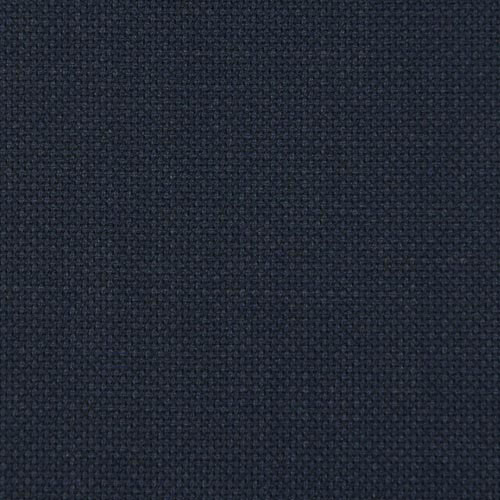
Men’s Suit Fabric
After cut and customization, suit fabric is the next consideration. While the difference in quality between an off the rack and bespoke suit is imminently obvious, both can appear quite stylish; that is not the case with poor quality fabric, which can make even the most expensive custom suit appear cheap. The most traditional fabric for a suit is wool, with a dizzying array of colors and weights to choose from. Suits, particularly for summer, are also available in silk, cotton and gabardine, as well as linen – a traditional favorite not without its own unique challenges – and even mohair and cashmere. There is also the tweed suit, a rugged classic best suited to weekends in the country; its thick, coarse fabric is designed to repel wind and water in the often quite chilly English countryside, and would be out-of-place at a social function in the city. The choice of a suit’s color is an equally important decision, and one best addressed in a separate discussion.
Men’s Suit Trimming
Perhaps the final indicator of quality is the suit’s trimming, the selection of its details. Options include pocket styles, linings, button materials, and the addition of subtle signals of the suit’s quality such as ticket pockets and functional sleeve buttons. These little elements, though they may seem extraneous, are signs of the suit’s personality, as well as the wearer’s. Good details won’t make a poor suit into a quality one, but they do elevate suits at every quality level from the ordinary to the individual.
There is much more to know about the suit, and far more depth to what has already been discussed. For those ready to dive into the world of cuts, fabrics, fittings, and fixtures, The Men’s Suit: The Jacket In Detail awaits. -
Bespoke - Made To Measure - Off The Rack - What's The Difference? Menswear Terminology Help
If you’ve been learning about menswear you’ve most likely heard these words.
- Bespoke
- Made To Measure
- Off The Rack
But what do they mean?
What’s the difference?
And most importantly why should you even care?
In this article and video I help you understand the main differences between these types of menswear and why knowing these details is important to your pocketbook.
First – understand this. One type of build is not necessarily better than any other – each has its place.
Depending on your individual need you may be better served by any one of the three.
The amount of money you spend does not guarantee better fitting or higher quality clothing.
Instead, the difference in terminology is about control.
It’s about an art form vs. factory efficiency. It’s about something being hand-made and 100% unique vs another piece of clothing being uniform, mass produced, and economically affordable for even the poorest student.https://www.youtube.com/watch?v=0ESFsHbNy5k
Bespoke - Made To Measure - Off The Rack - What's The Difference? Menswear Terminology Help
So Why Is This Important?
It’s all about the money really.
It’s about what we are conditioned to pay for, and what we value and define to be quality clothing.
It signifies prestige and enables the art of bespoke to charge a premium which makes it sustainable and forces the ready to wear industry to keep its costs down and efficiency up as in that realm price is the driver of purchase decision.
In the video I use the example of USDA Beef Quality Grades – as a Texan I felt this was an easy to understand example because we purchase food more often that we purchase clothing (at least I do).
The Gray Area Between Clothing Definitions
Technological change has made the distinction between Made to Measure and Bespoke more subtle. Within this confusion has emerged a battle for profitable relationships.
Initially all clothing was handmade – wealthy men had their clothing made by tailors and the rest of us made it within the family unit.
The industrial revolution changed this and made mass manufactured clothing affordable, but the distinction between the two was clear cut as professional handmade clothing was superior in cut, fabric quality, and fit.
Made to measure however has evolved over the last few decades from a simple offshoot of ready-to-wear to being almost indistinguishable from the custom hand-made process – at least in the eyes of the consumer.
Fittings are increasingly required for both bespoke and made-to-measure; a bespoke service may require an individually-cut pattern, which is then kept should further suits be required, and now made-to-measure measurements are often stored on a computer.
Even hand-work is now increasingly found in made-to-measure garments – this used to only be found in custom bespoke. And cash or skill strapped bespoke makers are now starting to utilize machines in the process.
Basically – the two worlds are getting closer. Bespoke still commands a premium, while made to measure is closer to off the rack prices. Yet if the difference is hazy, you can bet that the merchants will look to find a way to make a higher profit. And that’s where the fighting has started.
Word Protection – Bespoke clearly defined by law?
The precedent was set by the French – the word “haute couture” is protected by law in France and any one using this term must abide by a set of rules.
Vested parties in the UK have pushed to have similar protections for the word “bespoke”, however the British Advertising Standards Authority has ruled it is a fair practice to use the term bespoke for products which do not fully incorporate traditional construction methods.
But the fight won’t end here – as long as there is money involved and one well heeled manufacturer is threatened there will be a push for protection.
Quick Menswear Definitions – The 3 Classifications
1. Off The Rack or Ready To Wear
The vast majority of clothing made and worn in the world fits within this category. Ready to wear clothing is factory made in finished condition and standardized sizes, and has a wide range in quality standards depending on manufacturer. Of the three types ready to wear has the least control.
2. Made To Measure
Menswear produced to order from an adjusted block pattern. Usually a paper pattern is not built, rather pieces that match those needed are collected and assembled. It is differentiated from bespoke in that Men who choose to buy made to measure have some, but not all control over the process.
The degree of control varies considerably – expect more control to cost more. However it is very possible to get a perfect fit – the same as in bespoke, from a made to measure garment.
3. Bespoke
The word bespoke itself is derived from the verb to bespeak or to “speak for something”. Specifically it means “to give an order for it to be made”. It is a term analogous to women’s haute couture, and enjoys widespread use in UK and Europe while being rare in the United States.
Bespoke clothing offers a man full control. Bespoke standards particularly stress:
1) hand work used almost entirely on all garments
2) the individual cut of a paper pattern
3) personal service such as qualified advice
4) a large selection of fabrics
5 )keeping of all records for future orders
6) involvement in approved training that ensure standards are adhered to.
-
https://www.youtube.com/watch?v=KZuJVHOga-w
Buying Mens Suit Fabric - Tips To Ensure Suiting Material Is Quality - Beware Counterfeit Fabrics
Dressing Your Body: The Average Man
http://www.realmenrealstyle.com/dressing-body-average-man/
Menswear and fashion for the man of normal build.
All about fashion choices for men built right in the middle of “normal” — no advertisements, no bogus links; just solid advice on finding a good men’s suit and other clothing for average-sized Joe.
Men whose body types lie well outside the realm of “average” can generally find advice on their particular needs, but what of the man who fits into most ordinary clothes? The size-mediums of the world face their own stylistic challenges, not the least of which is finding clothes to provide a flattering fit instead of a generalized one.
This article addresses the needs of the regular-sized man. From 5’6″ on up to about 6’2″ and across the middle range of body sizes, this is for all the men who know they blend in naturally with the crowd.
Needs of the Average Sized Man
Clothes for a Clearly-Defined Body
If you truly fit into the comfortably average, you will want clothes that fit and define your body, rather than hanging limply from it. While everything should still wear comfortably, a tighter fit is generally better than a loose one — a good tailor should be able to create a suit that fits closest where your body is well-shaped, or adjust an off-the-rack suit to do the same.
It is rare to find a piece of clothing that fits perfectly in every part of your body, even for an average-sized man, but many men are content to settle for clothes that are long enough in the sleeve and not too tight in the collar — having a better fit than the rest already puts you well ahead of the other average-sized men in a crowd.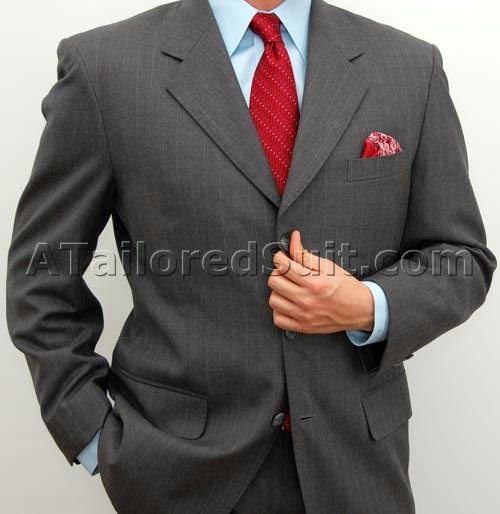
Distinctive Style
The primary advantage of an average build is the wide selection of clothes that already fit or can be easily cut to fit, and as a man who blends naturally into the crowd, you will want to make the most of it. Many other average-sized men have the same selection, and a distinctive style is necessary to stand out.
Since clothes that make you appear taller, shorter, slimmer, wider, etc. are less important, you benefit from details and flourishes that men with more unusual body types need to be careful with — don’t be shy.
Let your own style come out in your clothing; dressing like someone else’s example will just make you look like… someone else. And it may very well make you look like a lot of other people, if the style is popular.
Dressing the Average Man: Heels to Head
Patterning for the Ordinary Man
Since standing out is a primary goal for the average-sized man, bold patterns and colors are a good choice for those confident enough to wear them. There is a balance to be struck between “striking” and “tacky,” of course, but clothes with unusual and distinctive patterning will help to make you more than just another guy in a suit. Consider stripes, checks, or windowpanes in clearly-contrasted colors — these don’t need to be bright; the contrast stands out on its own.
For more formal settings, where a bold pattern would be inappropriate, opt for clothing with texture in the weave — even a simple herringbone patterning can turn a basic white dress shirt into a distinct stylistic note without violating formal standards.
There are few choices that will be genuinely unflattering — though you should always be aware of which colors suit your complexion best — but you will want to steer clear of anything that looks too conventional and unvaried. If you can safely imagine half a room full of men choosing to wear a particular article — leave it on the rack.
The Average Man’s Shoes
Since you have no specific areas to draw attention to or direct the gaze away from, decorative footwear that draws the eye is a safer choice for you than for most men. While formal situations will still call for a classic black Oxford or other unadorned shoe, you are free in most situation to experiment with bluchers, brogues, and even less formal moccasins and monkstraps. Matching color will be more important than most stylistic considerations — though no one benefits from shoes that are too ornate, unless they happen to be a rodeo star.
Enjoy adornments and tooling on the leather, but remember that you do want people to look at the rest of your body as well. Socks should match your trousers as closely as possible, regardless of the shoe color; a band of brightly mismatched cloth around your ankle draws the eye and leaves just as unfavorable an impression as a bare ankle would (and may in fact be mistaken for one, depending on the color of your sock).
-
Dressing Your Body: The Average Man Pt. II
Trousers and the Average Man’s Needs
Other than consideration of pattern, it may be hard to immediately see how your trousers can make a distinct stylistic statements, but consider often-underlooked elements when you search for flattering pants. Cuffs are almost omnipresent on off-the-rack trousers; stand out by choosing more formal-looking cuffless trousers in a fit that falls smoothly to your shoe.
Tailored pockets can help you fit your keys, cell phone, and other small objects without ruining the line of your pants. In the rear, you can add decorative stitching or a peaked tip to the back pockets, although either one will make the look less formal.
Belts are also an excellent opportunity for a stylistic statement; even a simple black belt can be made distinctive with decorative tooling. Woven or webbed belts are also eye-catching, and some relaxed social situations will even allow a patterned cloth belt, so try to have a good selection available in your closet.
Jackets and Suits to Stand Out in a Crowd
The two-button, single-breasted suitcoat has become a staple of menswear for a reason — it flatters most people, and will probably do just fine for you as well. That said, most situations you find yourself in will be dominated by men wearing the same style, so choose a fabric and pattern that stand out if you opt for this classic look. In situations where you need a more traditional color, choose a coat with a more distinctive cut.
The double-breasted suit, worn with confidence, can be a dramatic and elegant statement, though it will need to be well-fitted to avoid enveloping your chest in too much extra fabric.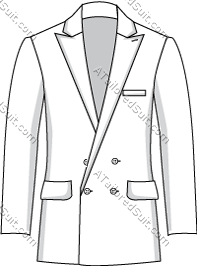
A vested suit (or trousers and an odd jacket with a differently-patterned waistcoat) is a slightly less smothering alternative, and stands out even more than the double-breasted suit as a classic, slightly dramatic look. Detailing adds distinctive style to any suit, so experiment with uncommon flourishes like ticket pockets, elbow pads, and even boutonnières to set your coat apart from the rest.
Shirts and Ties: A Style for Every Man
Although they only make up a small amount of your visible clothing, your shirt and tie can be the most defining features of your ensemble. Distinctive pattern and color help here, as elsewhere, and so do details of the cut and fit — an unusual collar style (spread, if it suits your face, or even a pin or tab collar) or a striking cuff (notched or cut-corner, or French cuffs with a handsome set of links) will help set you apart without being too attention-grabbing.
Woven ties, which carry extra bulk, can add a defining presence to your chest, and also hold up better if you choose to experiment with fancier knots; a full Windsor in a richly-colored woven tie is the height of understated elegance and still makes a striking impression.
Bow ties, for the daring, make a charming alternative — often overlooked as dated or even dorky, the bow tie has a long pedigree and a number of famous devotees throughout history, and is still a proper substitution for a straight tie in most social situations.
Since modern styles have become more reckless with shirts and ties than with suits, a word of caution is probably worthwhile — you want to be distinctive, but not shockingly out-of-place! Leave the novelty ties and paisley shirts at home, and choose interesting weaves or unusual details to make your shirts pop out instead.
Top it Off: The Everyday Man’s Hat
Hats are a personal sort of choice, and the shape of your face has a great deal to do with which styles will suit you best. Not having a hat at all, however, is guaranteed to be the least interesting choice — even if you only wear it between your car and the office door, put some serious thought into getting a favorite hat and taking it everywhere you go.
People will notice, particularly if the hat itself is striking. A flat cap gives a casual, rakish impression, while a fedora speaks of the high life and a bowler professes sophistication — whatever you choose, don’t pass up this opportunity to make another fashion statement (and to shade yourself from sun and rain as well!).
Finishing the Average Man’s Clothes
Just about any accent can be acceptable for an average-sized man, if it matches the rest of the outfit. Watches and even understated jewelry may be acceptable depending on social situation, and your frame should make it easy to find a good array of overcoats for different weather.
Where a larger or smaller man might be stuck wearing the same trench coat three seasons out of the year, you can indulge in colorful jackets, plaid hunting coats, or just about any other outerwear you please.
When considering your finishing touches, simply remember the basic needs — good fit, distinctive style, and only a touch of restraint in color and pattern — and you should have no difficulty using the wide selection of size-medium clothing available to turn Joe Average into the most memorable body at the party.
-
https://www.youtube.com/watch?v=DcHETm20UxE
Relativity And Buying A Man's Suit - High Quality Suits Compared With Lower Quality Menswear
Antonio talks about going into higher end men's suits and trying on the clothing and asking questions in order to develop a proper frame of reference for when you you decide to buy a suit.[/b]https://www.youtube.com/watch?v=DtkOyUbNXq4
When To Wear A Three Piece Suit - Wearing Vest With Single Breasted Suits - 3 Piece Suits
Choosing between 3 Button or 2 Button Mens Suits? – Men Style Tips
Should a man choose a three-button or a two-button jacket?
“Antonio, are three-button suits still in style? It’s really hard to find a three-button suit out there in the store. I like the three-button suit better than the two-button. I don’t even own a two-button. So now I’m in the market for some new suits, but where can I find three-button suits and would there even be a reason to consider two-button suits?”https://www.youtube.com/watch?v=Sk_7V1EfjGQ
Choosing Between 3 Button & 2 Button Mens Suits - 2 Button Jacket Vs. 3 Button Jackets
He’s really leaning towards the three-button, but I’m on both styles and I think both of them can suit a wide range of men. They are the most common styles on the planet.
I would say probably close to 98% to 99% of the suits I make are either two or three-button suits, and there’s a hidden two-and-a-half button, which I’ll talk about at the end, but let me start with the three button.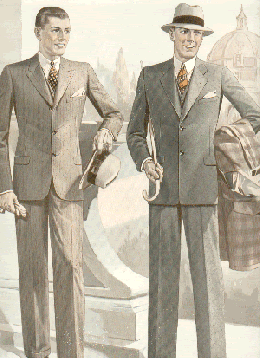
It has an older history. Originally, The suit jacket originates from military origin, from the military jacket, and these lapels right here folded up and it buttoned all the way to the top.
In the Marine Corps, we had leather around this area so that someone wouldn’t cut your head off with a sword. He would have to really hit you pretty hard with something, but that’s how the jacket was.
They started folding over the lapels. It was the style as men were coming back from combat. Those that were a bit more flamboyant, that started turning them over and reusing the jacket.
You had all these jackets left over from a particular war and they had to make good use of them or people were going to waste this stuff, so they started turning them and then the styles about 150 years ago started creeping down into normal menswear.
THREE-BUTTON SUIT
The three-button. What this does is this style works best on a man who is lean, a man who has an athletic build, a man who is younger, and it gives a more buttoned up looked especially with a three-button, you button the top two.
Occasionally, you could unbutton that top one, but you always button the center, never the bottom. With the three, you could have a more buttoned up look, which is inherently more formal. That’s where it works out well.
If you’re a taller man, a three-button is going to give you a more balanced look as long as I’m making the jacket a little bit longer and a few other style details that I would add if I was making you a jacket.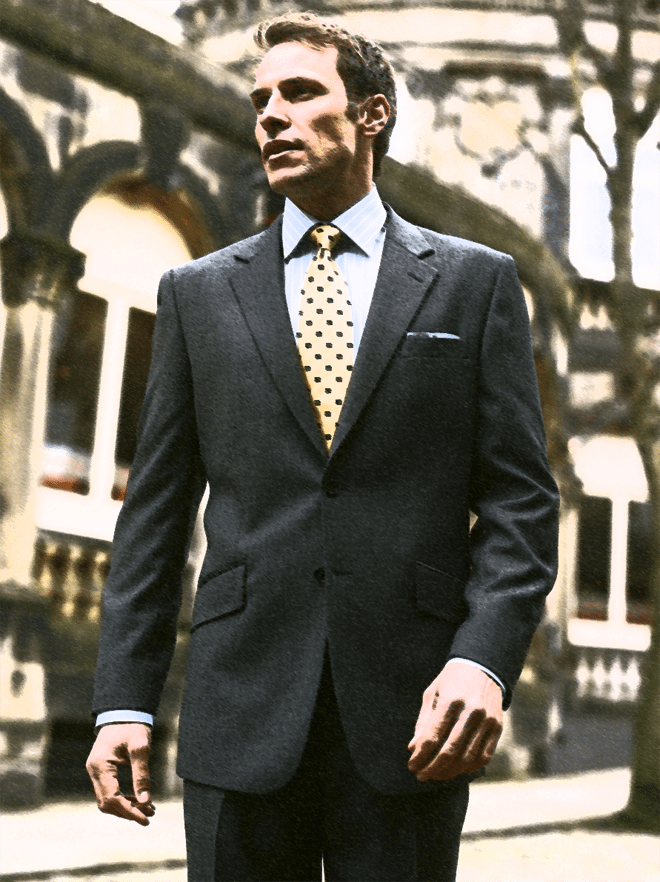
TWO-BUTTON SUIT
I don’t have the exact numbers in front of me. Let’s say 85% of the jackets I make are two-button because it is the one that will suit the most body types, is the one most men are familiar with. I think it’s a very natural place for a jacket to be made.
If you’ve got a little bit of a stomach, the two-button is going to be perfect. It’s more forgiving. It gives a little bit of this deeper V right here. It accentuates most body types. That’s why you’re going to want to lean toward it.
If you’re a shorter man in addition, a two-button or even one-button jacket is where you would want to go because it’s going to look better proportional-wise. From a distance, it’s going to make you look more normal. It’s going to give you a very nice size, proportioned, open area in the chest.
For sports jackets, I also like the two-button because the two-button can also be made roomier. Because the three-button buttons up higher, usually it’s a little bit tighter in the chest area. You don’t have just all this open space.
And so, with a sport jacket, it was built for sport especially if it’s going to be a jacket that you’re going to be shooting in or doing anything like that. I like, just tradition-wise, for a sports jacket to have more room to open up.
Now, also for peak lapels, if you like single-breasted jacket, to be able to have peak lapels, I like the two-button because it accentuates it more versus if it’s buttoned up all this way, the lapel is very short.
Peak lapels look great. They’re normally on double-breasted jackets, but a single-breasted jacket, if it’s two-buttoned, I think it looks really elegant. It is a classic look. It’s been around since 1920s.
TWO-AND-A-HALF BUTTON SUIT
The two-and-a-half button is where I make a jacket that has three buttons, but it is meant to be buttoned only at the center button, so the lapel roll goes down lower. I like this look. It’s a little bit more of a hidden look. It’s not something you see very often.
When you go to higher end menswear stores like Brooks Brothers, I think Ben Silver has a few jackets like this, but it’s something that you have to know what you’re looking for. It has to be made right because the button itself can interfere with the roll of the lapel. I really like the look. I think it’s the best of both worlds. It’s something that if you’re going to have a jacket made for you, go ahead and ask for it.
Hopefully that helps you understand. For this gentleman, where is he going to be able to find a three-button suit? He’s going to have to go to a higher end menswear store. He’s either going to have to also go to a thrift wear store or he’s going to have one custom-made.
Three-button suits go in and out of style every few years, so right now they’re out and he’s going to have a very hard time finding one on most off-the-rack manufacturers.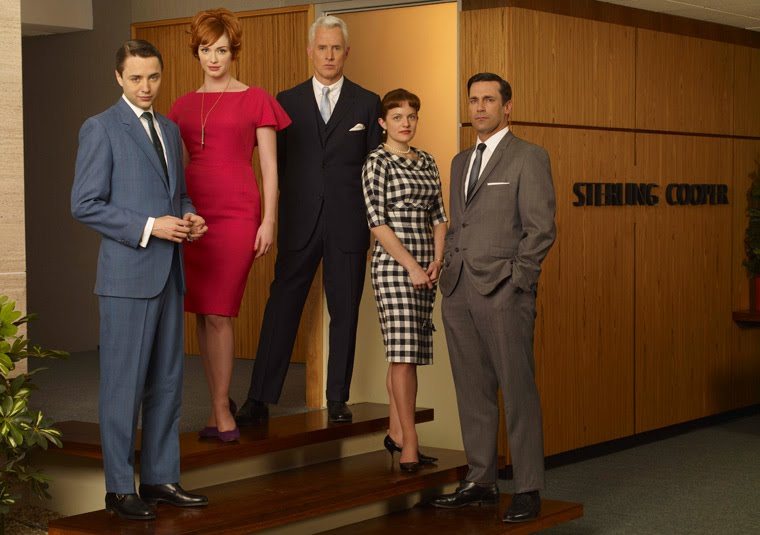
Best of luck and I’ll see you guys in the next video. Really, quick, go check out my website, Men’s Style Q&A. It is much easier for me to track, and the best questions and answers are going to be rising to the top. I’ll be looking for those and making videos from them.
Looking for a suit to invest on? We recommend Men’s Suit Shop in Amazon http://www.amazon.com/mn/search/?camp=1789&bbn=1045684&creative=390957&linkCode=ur2&tag=atai0d-20&rw_html_to_wsrp=1&rh=i:fashion,n:7141123011,n:!7141124011,n:1040658,p_6:ATVPDKIKX0DER,n:1045684,n:1045686
-
https://www.youtube.com/watch?v=srFq9CjAn0s
How A Suit Should Fit | Buy A Proper Fitted Suit | What Good Fitting Suits Look Like Video Tutorial
How Should a Suit Fit? Your Easy-to-Follow Visual Guide
http://www.artofmanliness.com/2013/09/25/good-fitted-suit-visual/
If you’re dressing on a budget, one of the most popular pieces of advice out there is to buy off-the-rack suits in the best fit you can get, and then take them to a tailor for custom adjustments.
That’s good advice. You’ll find it in several articles right here on the Art of Manliness.
But if you’re really going to get any benefit out of having your suits adjusted, you need to know a little bit about tailors and the kinds of adjustments they can (and can’t) make.
You also need to know what a “good” fit actually looks like.
Tailors vary in skill and in how they communicate the work they’re doing, so getting a suit adjusted is only going to deliver a good return if you can make your exact needs clear.
Below, we give you an easy-to-follow rundown on how your suit should fit.
What a “Good Fit” Looks Like
Can you guess which man had his suit tailored to fit?
When you try on a suit, you’re looking for a good fit in what’s called your “natural stance.”
That means standing up straight, preferably in the kind of dress shoes you’ll be wearing with your suits, with your arms relaxed at your side.
It’s not actually a very natural posture for a lot of us, but it is the base from which most of our movement flows. If the suit doesn’t fit well in this stance, it’s not going to move comfortably with your body either.
Practice standing in that relaxed, upright pose, and then start trying on suits in that posture. Look for a good fit in the following areas when you’re in your natural stance:
The Shoulder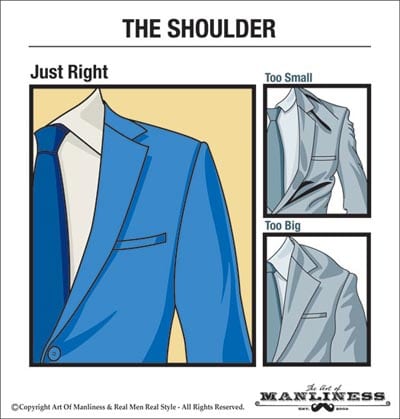
A well-fitted shoulder lies flat. The seam on top of the shoulder should be the same length as the bone under it, and should meet the sleeve of the suit right where your arm meets your shoulder.
If the seam that connects the sleeve to the jacket is hiked up along your shoulder bone, or dangling down on your upper bicep, the jacket is never going to sit properly. In these instances, you’ll see “ripple effects” that create lumps or wrinkles on the sleeve and the top of the jacket.
Shoulders are one of the hardest parts of a jacket to adjust after construction, so don’t buy a piece with an ill-fitted shoulder. Odds are you’ll never be able to get it quite right with post-purchase alterations.
The Seat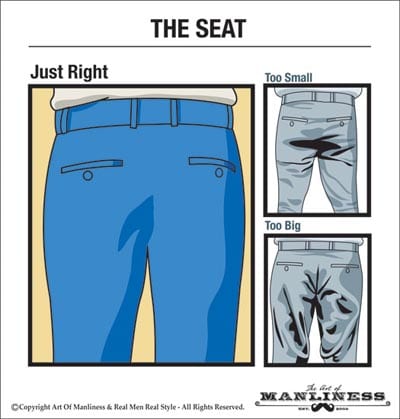
The back of your trousers should be a smooth drape over the shape of your rear end — whatever that happens to be.
A good fit in the seat will lie loosely against your underwear, without pulling tight against your butt or draping loosely down your thighs.
You can spot a bad fit in the seat when there are horizontal wrinkles just under the buttocks (caused by too tight of a fit), or by loose, U-shaped sags on the backs of the thighs (caused by too loose of a fit).
A tailor can “take in” a seat to make it tighter in the back without too much difficulty, but there’s a limit to how far he can go. If the seat was way too loose to begin with, it’s not possible to adjust it to fit without pulling the pockets out of place.
Unless the pants have an unusual amount of spare cloth on the inside, seats can’t be “let out” very far to make the fit looser. Err on the side of too loose rather than too tight when buying.
Trouser Break
The “break” is the small wrinkle caused when the top of your shoe stops your trouser cuff from falling to its full length.
This should be a small, subtle feature. One horizontal dimple or crease is usually ideal. The cuff should indeed rest on the top of your shoe — there needs to be contact — but it shouldn’t do much more than that. The trouser can fall a touch longer in the back than in front, so long as it’s still above the heel of the shoe (the actual heel, not just the back of the shoe).
This is one of the easiest adjustments to make, so you can rely on making some changes here if you need to. In fact, dress pants are often sold unhemmed, with the assumption that the purchaser will take the trousers to a tailor (or make use of the store’s tailor if there is one) to have the cuffs fitted.
-
The Jacket Closure
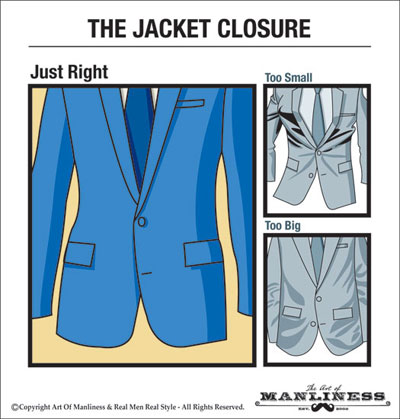
When you are wearing a suit and standing, you should have the jacket buttoned (you know the jacket buttoning rules, right? Click here to learn! http://www.artofmanliness.com/2013/05/15/the-sometimes-always-never-3-button-rule/).
This means that part of the trying-on process is checking how the front of the jacket closes over your body.
Close a single-breasted jacket with only one button when you’re testing the fit, even if it’s a three-button jacket. You’re looking to see if the two sides meet neatly without the lapels hanging forward off your body (too loose) or the lower edges of the jacket flaring out like a skirt (too tight).
The button should close without strain, and there should be no wrinkles radiating out from the closure. A little bit of an opening at the bottom of the suit is fine, but the two halves beneath the button shouldn’t pull apart so far that you can see a large triangle of shirt above your trousers. (Ideally, you shouldn’t see any, though a bit is socially acceptable, especially when you move.)
Taking in or letting out the waist to help the jacket close more comfortably is not a difficult adjustment, but it’s one with limits. Don’t expect a tailor to be able to make huge changes here. If the jacket closure looks really bad unaltered, it’s probably due to problems beyond the waist measurement, and you should be looking for a different jacket rather than planning on getting that one altered.
Jacket Sleeve Length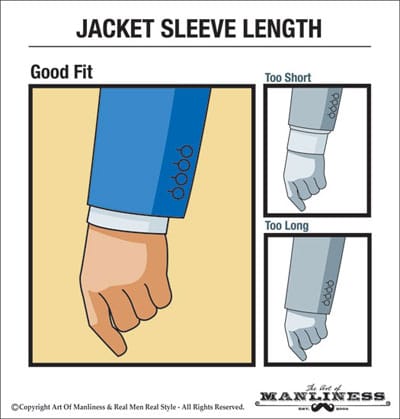
“A half-inch of linen” is a good, old-fashioned guideline for the relationship between a suit jacket and the shirt worn under it — about half an inch of the shirt cuff should be visible beyond the jacket cuff.
That said, it’s a general guideline, and you don’t need to get too obsessive. What you do need to be sure of is that the suit sleeve doesn’t rise above the cuff entirely — the seam where the shirt cuff joins the shirt sleeve should never be visible.
Similarly, the jacket sleeve should never hide the shirt sleeve entirely. At least a small band of shirt cuff should always be visible.
For most men, that ends up being a jacket sleeve that terminates just above the large bone in the wrist. But everyone’s arms are slightly different, and sleeve length is a very easy adjustment for a tailor to make, so get the best sleeve length you can (erring on the side of too long if possible) and then have it adjusted to fit.
Jacket Length
Not enough time or writing gets devoted to the overall length of men’s jackets. It’s more important than most people think!
A good suit or sports jacket should fall past the waist and drape over the top of the curve formed by the buttocks. An ideal fit will cover a man down to the point where his butt starts to curve back inward, and stop there (but anywhere in that general region is okay).
The hands are also a good marker here, and this is why it’s important to have your arms relaxed in your natural stance. The hem of the jacket should hit right around the middle of your hand — at or just past where the fingers meet the palm.
If the hem of the jacket is sitting on top of the butt, with a small little flare in the back, it’s too short. If it falls past the bottom entirely, longer than the arms, it’s too long. The hem can be adjusted upward without too much trouble, but if you go too far the front pockets start to look out of proportion, so don’t count on more than an inch or two of adjustment here.
Jacket Collar
It’s easy to tell a well-fitted collar from a poorly-fitted one, although identifying the cause of the bad fit can be challenging.
Your jacket collar should rest against your shirt collar, which in turn should rest against the back of your neck. All of these should touch lightly, without significant gaps in between.
If the collar is too loose, it’s very easy to spot — there will be a gap where it’s flopping back off your neck.
A tight collar is a little harder to spot on a jacket, since (unlike a shirt collar) it’s almost all in the back. Turn from side to side as needed and check it out in a mirror. A tight collar will create bunching and folds just beneath it, and often wrinkles the shirt collar underneath it as well.
Bad collar fit could just mean the neck size is wrong for you, but it’s often caused by a larger fit issue: bad shoulder sizing, a back panel that’s too small for you, or even a jacket that’s constructed with more of a forward or backward tilt than your neutral stance.
Since these adjustments cost time and money to fix, you want to get as good of a fit in the original jacket as possible at the collar.
Four Automatic “Bad Fit” Warnings
There are a couple of easy to spot problems that are major warning signs. A suit with these “bad fit” signs is one that you probably won’t ever be able to adjust to a really good fit.
Unfortunately, most of them are caused by the core structure of the suit — and that means that your body just isn’t a good match for the way that particular brand makes its pieces.
Be patient, try on lots of brands, and don’t compromise (unless you know it can be fixed!).
If you can’t afford bespoke (made to order), an adjusted off-the-rack suit can work — but you have to start with a pretty good fit in the first place, or it’s never going to get the results you want.
Unless you want to pay for alterations, be careful buying any jacket that’s showing these serious warning signs:
The Dreaded X-Shaped Button Strain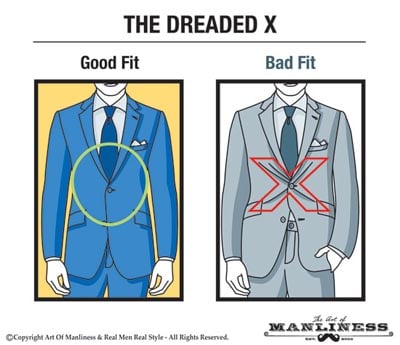
If you can see wrinkled lines radiating outward from your jacket button when you close the jacket, it’s too tight and will need adjustment.
The Dreaded X, as my friend Barron over at Effortless Gent likes to call it — is not a look you seek in a well-fitted jacket.
Front button strain is indicative of a bad fit in the torso, and it can go beyond just the waist size — you’re probably straining at the shoulders or in the back, too. On a more basic note, it also means the button is going to be prone to popping off.
Don’t buy a jacket that shows strain lines radiating outward from the button. If you’ve got an old jacket that used to fit but has started showing them, it’s possible that you’ve either gained weight or accidentally shrunk the jacket in a wash — in that case (assuming the fit was good before), you may be able to have the waist let out a little and keep the jacket in use.
Shoulder Divots & Upper Arm Wrinkles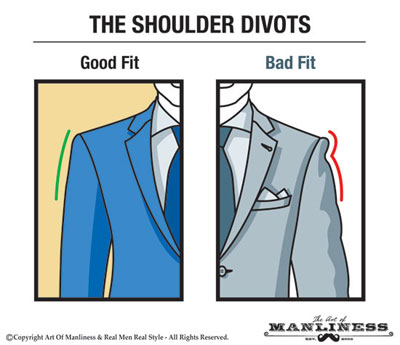
If the sleeve of the jacket seems to dip in slightly just under the shoulder, and then flare back out again, the shoulders are too big. What you’re seeing is the shoulder padding protruding beyond your arm, and the cloth of the sleeve tucking back in underneath it.
You can also get those wrinkles if you’ve got a somewhat slouched stance and the jacket is stiffly-constructed for a more upright posture. In either case you’ll need to get a smaller size, so that the seam where the shoulder meets the sleeve matches up with your body’s shoulder, or give up and try a different brand.
-
Shoulder Wrinkles — Top Rumpling

If you’re getting noticeable bunching on top of your shoulder, rather than on the upper sleeve, the jacket is too large in the shoulders.
This could be a simple length problem, but more likely it’s that the interior space is simply too large — your shoulders aren’t broad enough, front to back, to fill out the jacket.
Try a slimmer fit, if the manufacturer offers multiple styles, or a smaller size. If you’re still seeing wrinkles on the tops of your shoulders, the brand probably isn’t going to work for you.
Twisted Sleeves — Bad Sleeve Pitch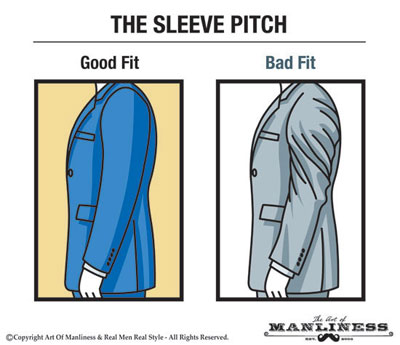
Faint spiraling wrinkles on the outside of the sleeve occur when the angle of your arm in its natural stance doesn’t match the angle that the sleeve was constructed with. The result is a sleeve that looks slightly twisted even when your arms are hanging still at your sides.
A tailor can theoretically remove the sleeves and reattach them at a slightly different angle, but it’s not a simple or a cheap fix. Generally speaking, you can consider this one a deal-breaker. Keep trying until you find a jacket where the sleeves fall smooth and straight when your arms are resting in their natural stance.
-
what brands should i be looking at for the best quality in the $200-500 range?
-
what brands should i be looking at for the best quality in the $200-500 range?
When you're talking suits, it isn't about the "brand," per se. in my opinion. When you start looking at the brand, that's going to drive the price up. Also, in your price range, you're going to be buying off-the-rack, which means you're going to be taking in to a tailor or seamstress to have the suit adjusted and altered anyway.
If you can spend $500, I'd strongly suggest that you save another $200 and go to a made-to-measure place like http://mysuitny.com/website/default.aspx, they'll make you some ? . Or someplace like http://us.suitsupply.com/en_US/home or an old standby like Brooks Brothers. If those place ares too pricey for you try Jos. Banks or MenWearhouse, but only as a last resort.
-
Maximus Rex wrote: »what brands should i be looking at for the best quality in the $200-500 range?
When you're talking suits, it isn't about the "brand," per se. in my opinion. When you start looking at the brand, that's going to drive the price up. Also, in your price range, you're going to be buying off-the-rack, which means you're going to be taking in to a tailor or seamstress to have the suit adjusted and altered anyway.
If you can spend $500, I'd strongly suggest that you save another $200 and go to a made-to-measure place like http://mysuitny.com/website/default.aspx, they'll make you some ? . Or someplace like http://us.suitsupply.com/en_US/home or an old standby like Brooks Brothers. If those place ares too pricey for you try Jos. Banks or MenWearhouse, but only as a last resort.
From what i read, those places offer low quality suits -
Maximus Rex wrote: »If you can spend $500, I'd strongly suggest that you save another $200 and go to a made-to-measure place like http://mysuitny.com/website/default.aspx, they'll make you some ? . Or someplace like http://us.suitsupply.com/en_US/home or an old standby like Brooks Brothers. If those place ares too pricey for you try Jos. Banks or MenWearhouse, but only as a last resort.[/b]
From what i read, those places offer low quality suits
That's what I was saying, you can save and get a made-to-measure joint, or go to some Brooks Brothers type ? .
-
Men’s Suits – The Suit Jacket in Detail
Having looked at an introduction of the men’s suit, it is now time to deepen our understanding with a more detailed exploration of its main component, the jacket. A men’s suit jacket has many underpinnings and options, and each is an important part of selecting a garment that will flatter and enhance ones individual characteristics.
Single or Double Breasted Suits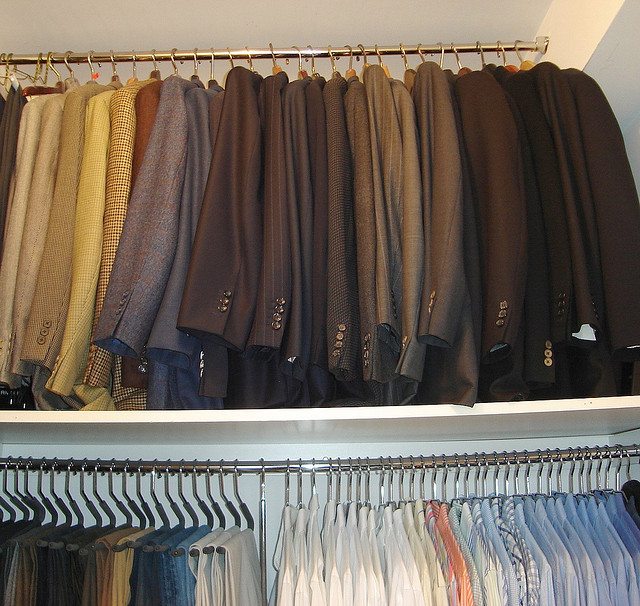
The first and perhaps most noticeable element of the jacket is whether it is a single or double-breasted suit jacket. (http://www.atailoredsuit.com/mens-double-breasted-suit-jacket.html) Single-breasted men’s suits have a single row of buttons down the front, and the jacket ? only overlap enough to permit buttoning. A double-breasted suit has two rows of buttons, and the front overlaps sufficiently to allow both ? to be attached to the opposite row of buttons. The choice between single- and double-breasted is a matter of personal taste, though the vast majority of American men choose single breasted suits; a lack of familiarity with the double-breasted option may account for some of the single-breasted suit’s dominance. Being that it is a less common choice, a double-breasted suit will make the wearer stand out, and on the right man, can be an excellent choice. Thin gentlemen, particularly those who are somewhat taller, can benefit greatly from double-breasted suits, as they will give a fuller appearance to the figure; on larger men, double-breasted suits can have a tendency to draw attention to the midsection, so careful attention and an expert tailor should be employed.
Suit Jacket Shoulders
The jacket’s foremost obligation is to frame one’s face in a flattering manner and direct the eye upward towards it, assisted by the dress shirt (http://www.atailoredsuit.com/mens-dress-shirts-introduction.html) and tie. The width of one’s shoulders plays a crucial part in the perception of the face and head, and so form the first major element of the jacket. Wide, excessively padded shoulders shorten the neck and make the head seem excessively small, while unsupported, extremely narrow shoulders can make one’s head resemble a parade float. For most men, the shoulders should be natural, supported but not over-padded, and should slope gently up, drawing the eye towards the head and face. Additional padding can be added within reason to produce a more confident, commanding appearance and give the illusion of height, while a softer, more sloped shoulder can be used to offset extra height.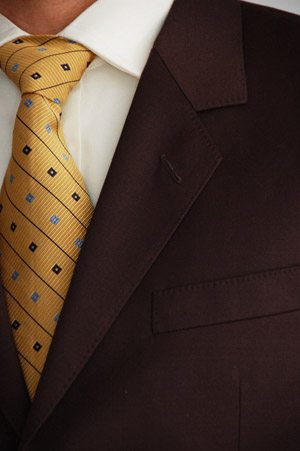
Attached to the shoulders is the collar, and with it the lapel,(http://www.realmenrealstyle.com/lapel/) which stretches down to where the buttons begin. Lapels come in a variety of styles with a number of options. The lapels’ width is perhaps subject to the most variance, with the extremely narrow lapels of the 1950s standing in stark contrast to the excessively wide lapels of the 1970s. As is the case with much of classic fashion, the most timeless lapels are of a moderate width.
In addition to different widths, lapels come in three styles: notched, which has a wide, V-shaped opening where the lapel and collar join; peaked, which flares out in a sharp point, with a very narrow, deep V at the join; and shawl, where the lapel and collar are indistinguishable, curving from around the neck all the way down to where the lapels end. Notched and peaked lapels (http://www.realmenrealstyle.com/peaked-lapel/) are equally classic, though the latter are most commonly found on double-breasted jackets. Shawl collars are almost exclusively limited to formal-wear, though they occasionally appear on ready-made suits – these should be avoided if a classic look is desired.
Suit Jacket Waist Buttons
Where the lapels end, one finds the waist buttons. As previously indicated, a suit jacket has either one row of buttons or two, depending on whether it is single- or double-breasted. A single-breasted jacket has a single row of buttons, numbering anywhere from one to four, though two and three are most standard, while a single-button is generally limited to the tuxedo. The three-button jacket, although a sometimes unfamiliar garment to those unaccustomed to wearing suits, is the most traditional configuration, taking its cue from English riding jackets; properly worn, it gives the illusion of height. Traditionally, only the middle or second button is fastened when standing, though the top two buttons may be fastened to produce a slightly more formal appearance. Two-button suits are a slightly later innovation, and because they show more of the shirt and tie, can produce a slightly more slimming appearance. Only the top button of a two-button jacket is fastened; with the exception of a jacket with only one button, the bottom button of a single-breasted jacket is never fastened.
Four-button jackets are somewhat more rare than the other options, but are an elegant choice for the very tall man; because of his height, a four-button suit on a very tall man emulates the look of a three-button jacket on a shorter man. It is very common to see professional basketball players wearing four-button suits; the loud colors and wild patterns often chosen by celebrities, however, should be avoided by the gentleman. Unlike two- and three-button suits, where the bottom button is left undone, a four-button jacket is worn with all four buttons fastened.
Double-breasted jackets most commonly have either four or six buttons on each side – where there are six buttons, only the lower four are for buttoning, though due to the design of the suit, only two will actually be buttoned at any given time. There is also an extra hidden button on the reverse of the outside flap of a double-breasted suit, onto which the inside or “hidden” flap attaches. Contrary to the habits of certain celebrities, a double-breasted jacket is never left unbuttoned when standing, permitting it to flap around wildly; it is always securely buttoned upon standing and remains buttoned until one is again seated. Additionally, while the bottom button of a single-breasted jacket is always left undone, both of the operable buttons on a double-breasted jacket are fastened. As with the gorge of the lapel, the height of the waist buttons can be altered slightly to accentuate or diminish height, but this must be done
carefully.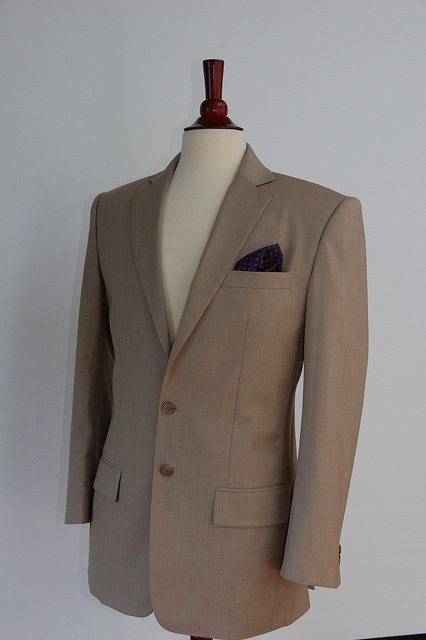
-
Men’s Suits – The Suit Jacket in Detail Pt. II
Suit Jacket Length
Inherent in all the above elements is the jacket’s length. A jacket that is too short will expose undesirable portions of the wearer’s anatomy, while a jacket that is overly long will dwarf the wearer, potentially giving the appearance of a 1930s film gangster, or in the case of extremely long sleeves, an orangutan. Because of the modern trend towards lowering the gorge and waist buttons on jackets, as well as the tendency of many men to wear their pants at their hips, rather than at the waist, most men have become accustomed to jackets that are too long.
Suit Jacket Fit
A properly-fitting jacket will have its waist button just below the wearer’s actual waist, and should have sleeves that leave room for a minimum of 1″ of the wearer’s shirt cuff to be visible. A very general way of determining if a jacket is long enough is to curl one’s fingers at the second knuckle around the bottom of the jacket. If the jacket’s hem just reaches where the fingers join to the hand, then it fits properly; if the hem touches the curled fingers – or worse, bunches up – then the jacket is too long. Another gauge is to measure from the top of the spine to the floor and divide in half. Both techniques, however, are only generalizations, and cannot take into account any unusual variations; performed correctly, both will give a relatively good measure for a ready-made suit, while a bespoke or made-to-measure suit will involve more accurate measurement. In the same line, a jacket’s sleeves should be well fitted to the particular dimensions of the wearer’s arm, and should taper as necessary to avoid the appearance of flaring out towards the hand. The cuffs should be wide enough to allow free movement, though not so wide as to hang loosely when the arms are raised; likewise, they should not be as narrow as to resemble the elasticized cuffs on rain jackets.
Many other elements round out the details of the suit jacket – vents, pockets, buttons, and more — all of which lie within The Suit: The Jacket Completed.
